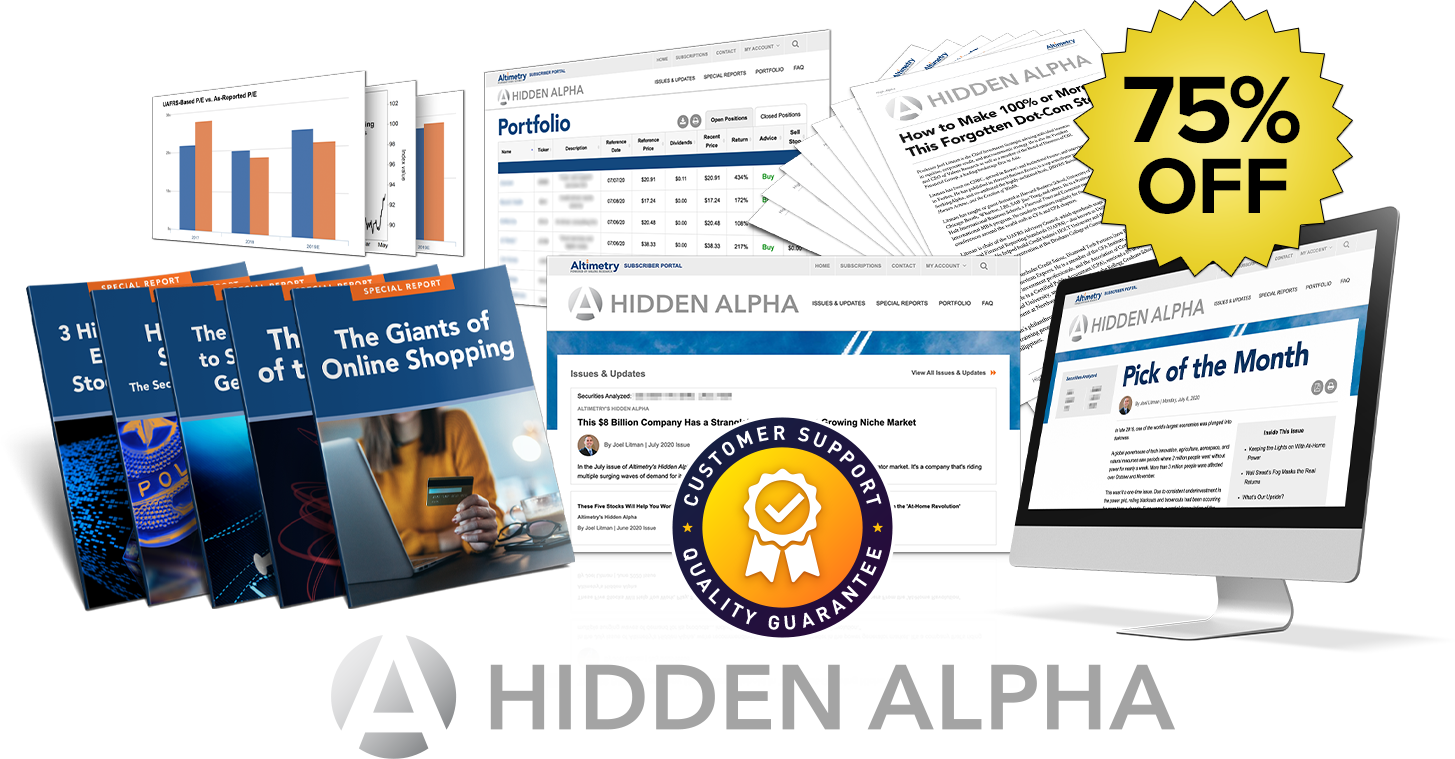Table of contents
Who is Joel Litman?
The Giants of Online Shopping
3 Pillars of the Internet
14 Fad Stocks to Sell Before You Get the Vaccine
Hidden Alpha: What's in it for you?
How to Be a Stock Cop: The Secrets of the L.O.C.K. System
3 High-Flying Home Entertainment Stocks to Buy Now
Even if you’ve never heard of Joel Litman, chances are he’s already watching over your portfolio.
Eight of the 10 biggest money managers in the world use his research.
That means if you have a retirement account through Fidelity…
If you own any of the Vanguard index funds…
Or any iShares ETFs…
If you’re a current or retired teacher, police officer, firefighter, or municipal worker…
It’s likely that Joel Litman’s expertise plays a crucial role in your retirement. Quite often, his research is the final word.
.png) These big firms, like JPMorgan Chase, employ hundreds of analysts and experts trained to read the tea leaves of the stock market. Their work is done by looking at charts and graphs.
These big firms, like JPMorgan Chase, employ hundreds of analysts and experts trained to read the tea leaves of the stock market. Their work is done by looking at charts and graphs.
But when those big firms want to dig deeper – to fully investigate the management, the operations, and the corporate strategy on a personal level – they look to Joel’s research.
He’s widely considered to be America’s top “stock cop.”
Some of his private clients pay him as much as $100,000 a month for his research.
His unique investigative skill has a history of uncovering the truth…
Even when it goes against what the mainstream media wants you to believe.
Like when he called the March 2020 crash a month early…
In the beginning of February, Joel warned his corporate clients.
 Just a few weeks later, that negative shock came…
Just a few weeks later, that negative shock came…
As the coronavirus forced lockdowns across America, the stock market pulled back 34% in a matter of days.
Anyone who listened to Joel’s February warning was prepared.
Joel called the bottom of the coronavirus crash as well.
On March 16, at the low point, Joel wrote:
 Over the next month, the market rallied…
Over the next month, the market rallied…
And it hasn’t looked back since.
That kind of foresight is why Credit Suisse once built a whole department around Joel.
His uncanny knack for spotting market discrepancies has been featured on CNBC and in Forbes and Barron’s.
Matt Rakowski, former VP of Goldman Sachs praised his work:
“Some of the stock ideas [Joel] has recommended are really incredible with huge upside, and long before the rest of the Street sees it. This research has brought me significant gains in my portfolio.”
And award-winning financial journalist Tom Gerencer, whose work has been referenced by Fortune, ABC, NBC, BBC News, and The Economist says:
“I can’t imagine investing without his advice.”
Joel has taught his stock market technique to future CEOs at Harvard and the Wharton business school.
In fact, former Harvard Business School professor John Sviokla said of Joel’s unique system:
“Unless you’re running billions of dollars and hiring the best talent, you’ll never see anything like this.”
Joel even employs a unique voice analysis technology – capable of reading curious changes in a CEO’s pitch during quarterly earnings calls.
All of Joel’s investigative work points to a massive shift in the stock market – coming as soon as the vaccine takes hold.
In short, he believes the Covid vaccine will crash one specific part of the high-flying tech bull market.
While another group of under-the-radar tech stocks soar.
You’ve been handed a rare opportunity to position yourself early.
Right now, you can practically see into the market’s future.
No one saw the pandemic coming six months ahead of time.
But we’re tracking the progress of the vaccine every day.
And we know a time will come when the pandemic is over.
If you make the right moves now – you’ll be set up for the next 10-20 years.
That’s why Joel is going on camera right now to issue an urgent bulletin:
JOEL:

Hi, I’m Joel Litman.
When the Covid-19 virus hit in March, investors rushed into one specific part of the tech market – the companies who would benefit from our new “stay-at-home” habits.
These stocks were among the biggest winners of 2020.
A few have reached new highs…
Many of the so-called experts are currently recommending you buy more.
But I must warn you:
Many of these Covid darlings are in deep trouble.
When a vaccine starts working – these stocks will drop like a rock.
And unless you act quickly, they will drag your retirement account down with them.
That’s because I believe 401ks, mutual funds, pensions, and a large number of individual accounts on websites like Robinhood and Scottrade – are drastically overweight in these very stocks.
Many of them have been the only place to find growth during the pandemic.
And everyone piled in, driving these stocks up far beyond their valuations.
It’s likely you are invested in many of these companies, whether it’s in your personal account or through a retirement fund or index.
Now, the other shoe is about to drop.
But unlike Covid-19, the warning signs are already there for this “Vaccine Crash.”
Even the hint of a vaccine has sent “stay-at-home” stocks in a tizzy.
Take a look at this chart:
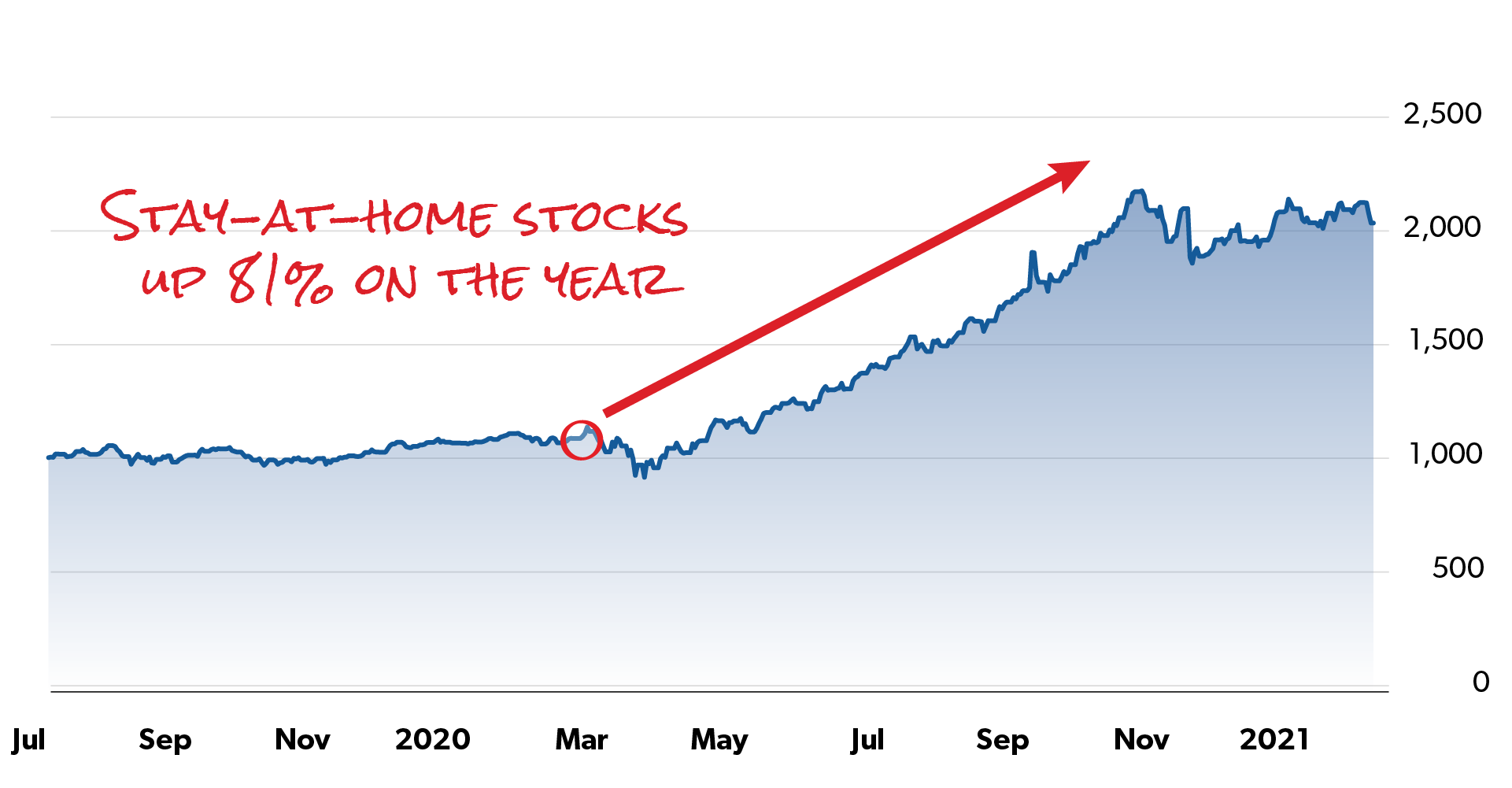 A basket of the most popular “stay-at-home” stocks returned 81% since March…
A basket of the most popular “stay-at-home” stocks returned 81% since March…
Now here’s something scary for investors:
Take a look at what these same companies did on November 9…
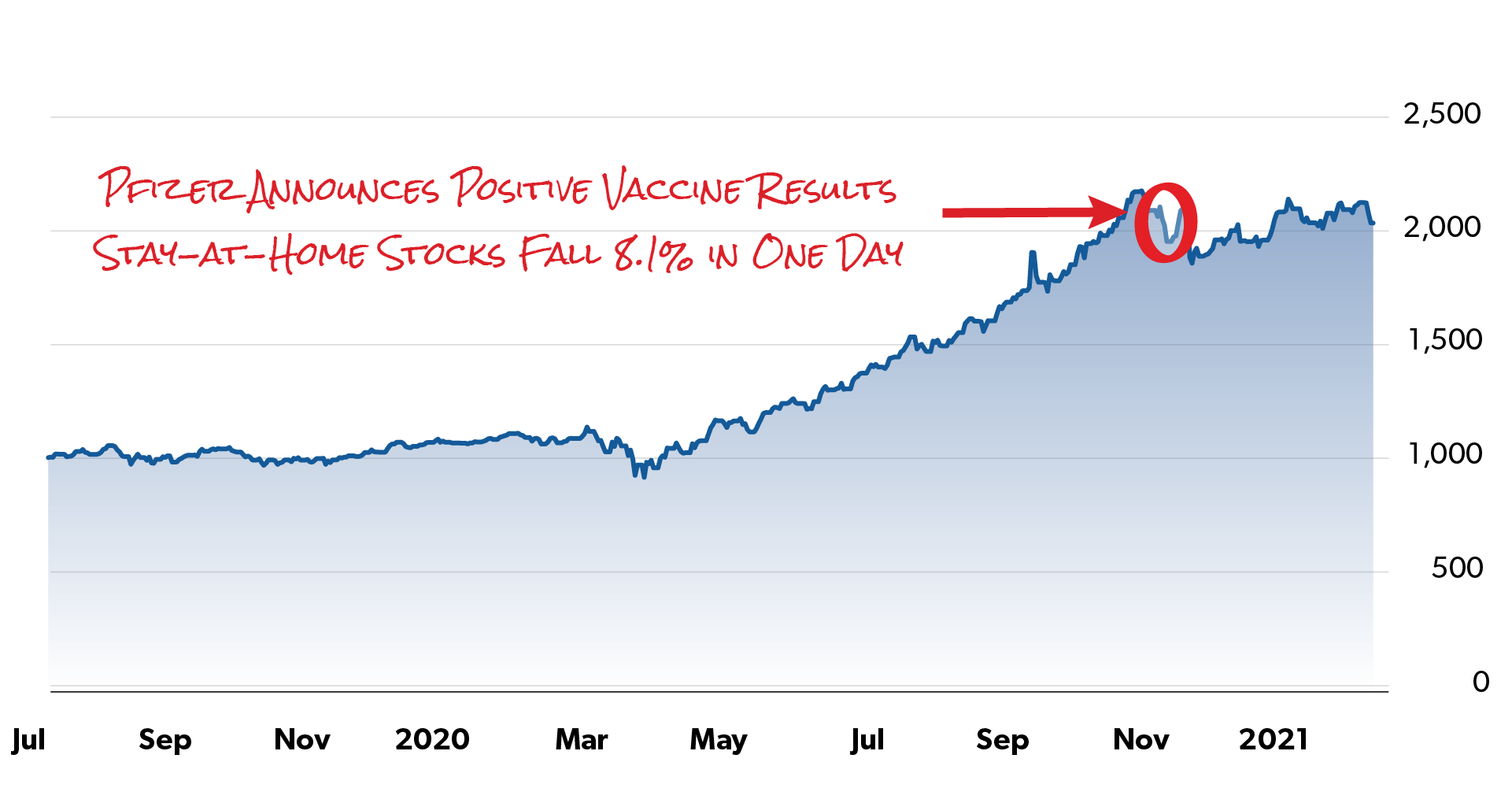 That’s the day Pfizer announced the overwhelmingly successful results of its Covid-19 vaccine trials.
That’s the day Pfizer announced the overwhelmingly successful results of its Covid-19 vaccine trials.
These stocks plunged 8.1% – in one day.
To put that in perspective, that is worse than the worst single day of the 2008 financial crisis.
In fact, the overall stock market has only fallen that much in a single day ten times in its entire 123-year history.
The same thing happened again in the first week of December.
Moderna announced positive results for its own vaccine.
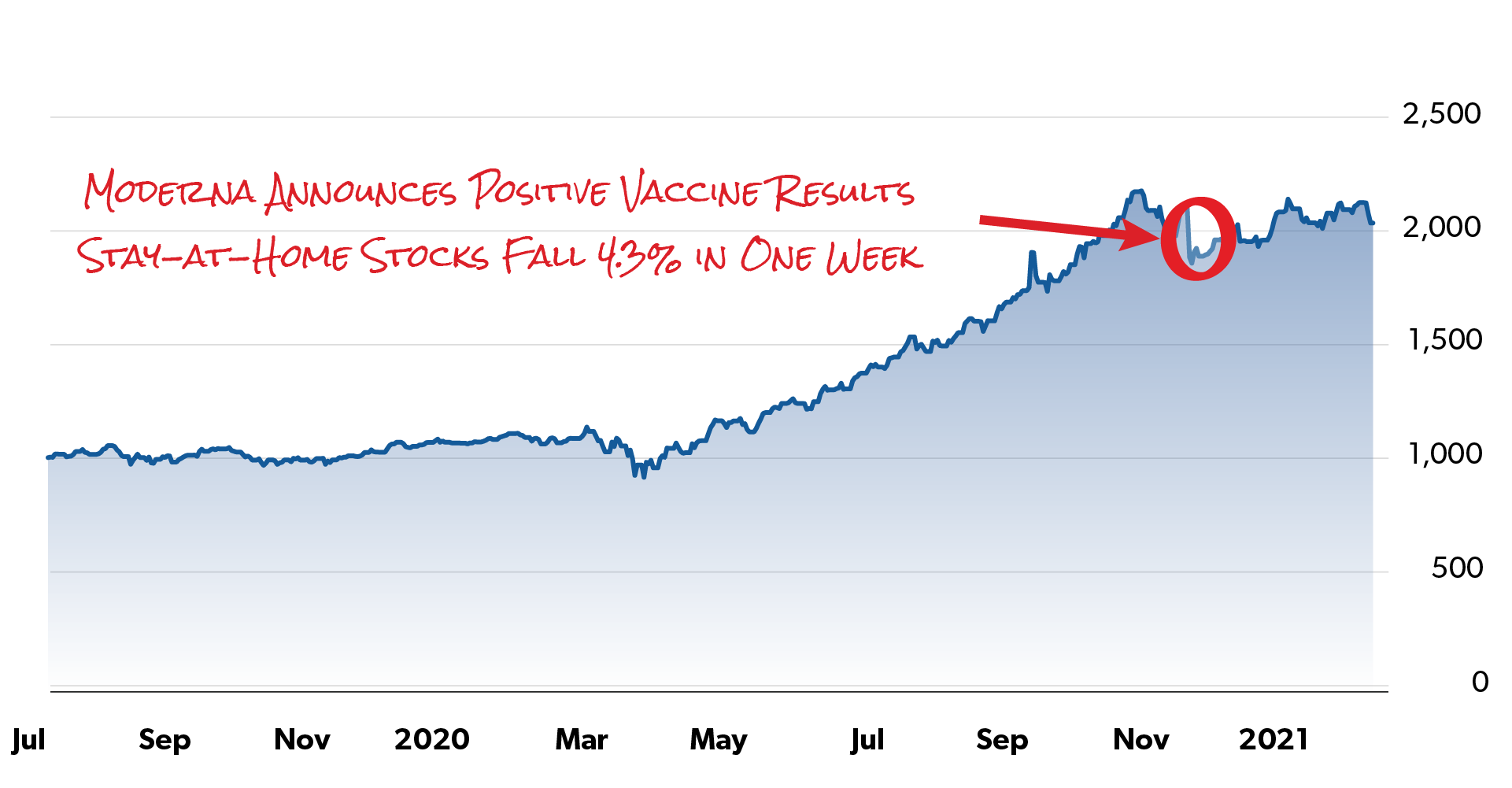 And over the next 10 days, this same basket of “stay-at-home” stocks slumped another 4.3%.
And over the next 10 days, this same basket of “stay-at-home” stocks slumped another 4.3%.
Now, imagine what these stocks will do when everyone actually gets the vaccine…
And stops staying at home.
The market lost a third of its value when Covid hit…
But I believe the vaccine’s effect on the market could be even worse than the virus itself.
This “stay-at-home” sector could see losses of 75% or more after the vaccine takes hold.
As Americans' lives go back to normal, many of these “stay-at-home” stocks will be exposed as short-term fads…
I’ll name a few of these companies in a moment… It’s likely you’ll recognize all of them.
But the truth is, I’m not here to tell you to sell your stocks.
There’s a bigger message.
A once-in-a-lifetime opportunity…
Yes, a successful vaccine will wipe out many “stay-at-home” fad stocks.
But not all of them…
A few of these companies will become the tech giants of the next decade.
This is a perfect setup for you…
We never know what the future is going to look like.
But right now, we have a very clear idea of how the world is going to look in a year.
Radically different.
The chance to position your portfolio correctly – ahead of time – is an opportunity you may never get again.
Because not everything will go back to normal once Covid-19 has gone away.
Some of the changes we made during the pandemic will stick.
In the last year, we’ve undergone a massive shift in habits.
Normally, disruption like this takes years.
Before 2020, you could say the Internet revolution was slowly sweeping the world, subtle step by subtle step.
When Covid-19 hit – technology staged a coup. And it’s taken over the lives of almost every American.
Here’s the truth most people haven’t figured out yet…
The new Internet-based economy is not temporary.
This “new normal” is going to have decades-long repercussions for our society.
And it’s creating the largest wealth shift in American history.
If you know where to move your money as soon as possible…
You could make a killing on the permanent post-Covid economy.
If you stand still… And hang onto the fad stocks of 2020…
You are going to get burned. It’s as simple as that.
This shake-up happened so quickly, most investors have frozen.
They don’t know what to sell – or what to buy.
That’s understandable.
Many of these companies can look the same on the surface – while looking completely different in the fine print.
So how do you know which tech companies are just Covid fads?
And which will rule the post-Covid world?
That’s where I come in…
I’ve created a system – what I call the L.O.C.K. system – that separates the winners from the losers.
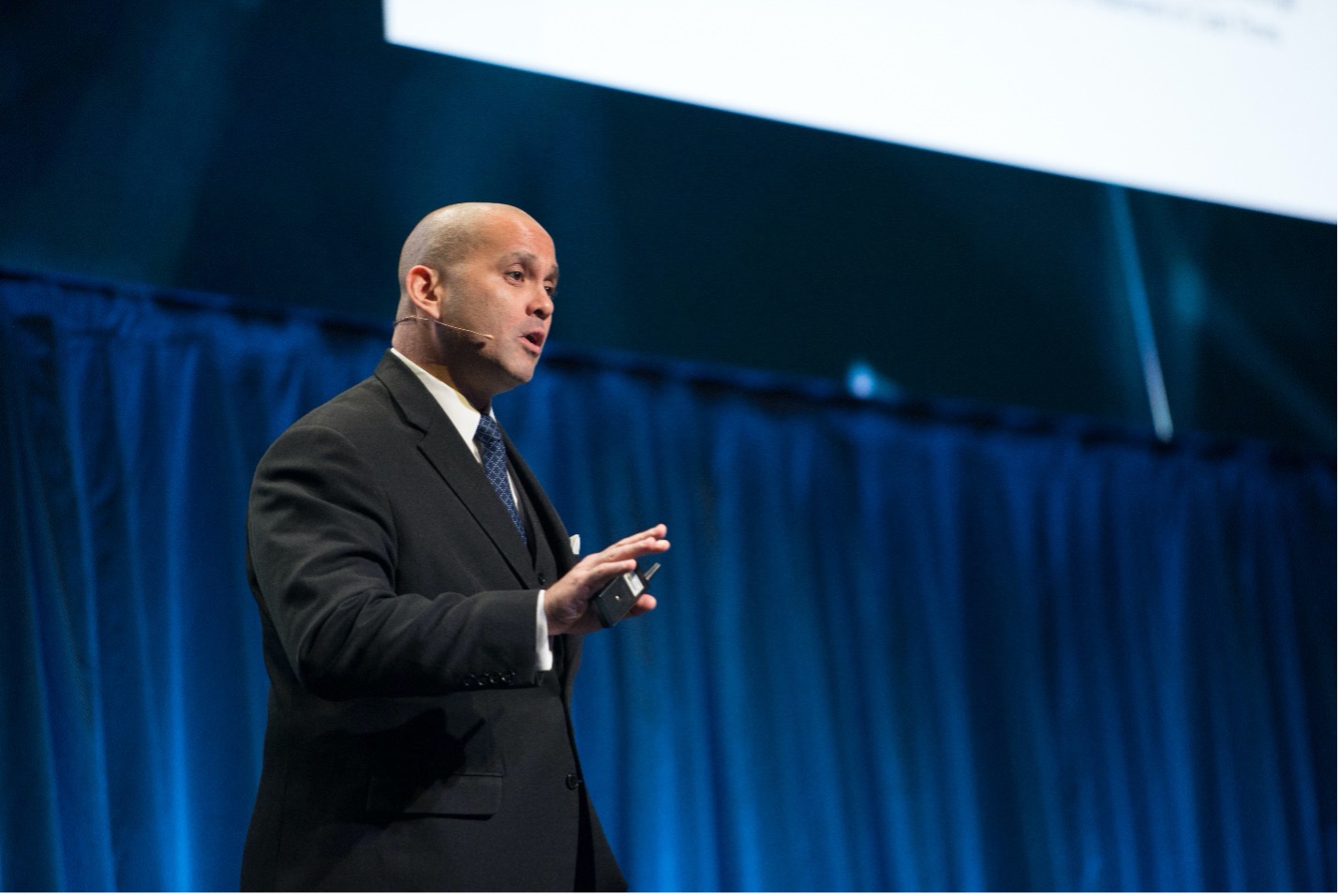 It’s like having an X-ray view into company operations. You’ll be able to determine how they really feel, behind closed doors.
It’s like having an X-ray view into company operations. You’ll be able to determine how they really feel, behind closed doors.
I even developed a proprietary technology to decipher changes in pitch in the CEO’s voice during quarterly earnings calls.
This machine allows my firm to determine whether a CEO is feigning confidence and hiding skepticism. Or if they believe the story they’re telling.
In fact, the only other rival technology like it was developed by former CIA operatives.
That’s why my big shot clients pay me so much.
Because I will get to the truth of a company’s operations – even when the lazy mainstream media is peddling a different narrative.
I remember back in 2016, I was at a conference in Munich. And my L.O.C.K. system had just zeroed in on potential trouble at BMW.
The investment world was all-in on the luxury carmaker.
Nowhere more so than its native country, Germany.
So you can imagine the reaction when I stood on stage in Munich and told a crowd of German investors to sell their BMW stock.
People rolled their eyes and groaned. Many of them whistled, which is like booing in Europe.
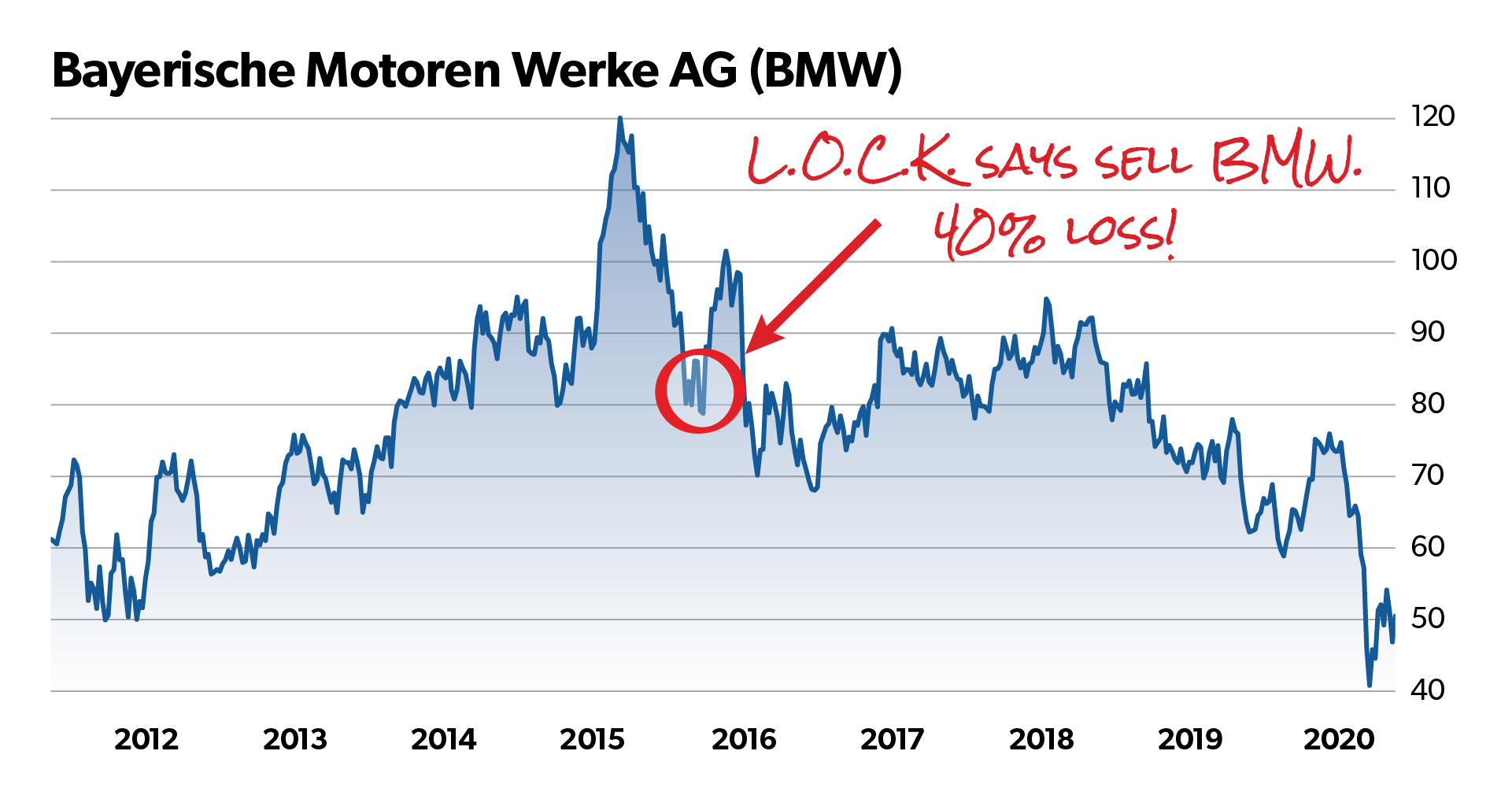 But since then, BMW has dropped 40%…
But since then, BMW has dropped 40%…
And never reached its highs of 2015 again.
The crowd was wrong. The L.O.C.K. system was right.
Or take the case of Alaska Air.
Back in 2017, the mainstream media touted the company’s low 12.4 price-to-earnings ratio.
But my L.O.C.K. system spotted some serious discrepancies in Alaska Air’s numbers.
In fact, by my calculations, its true P/E ratio was 25.6. Making it far more expensive than the market thought.
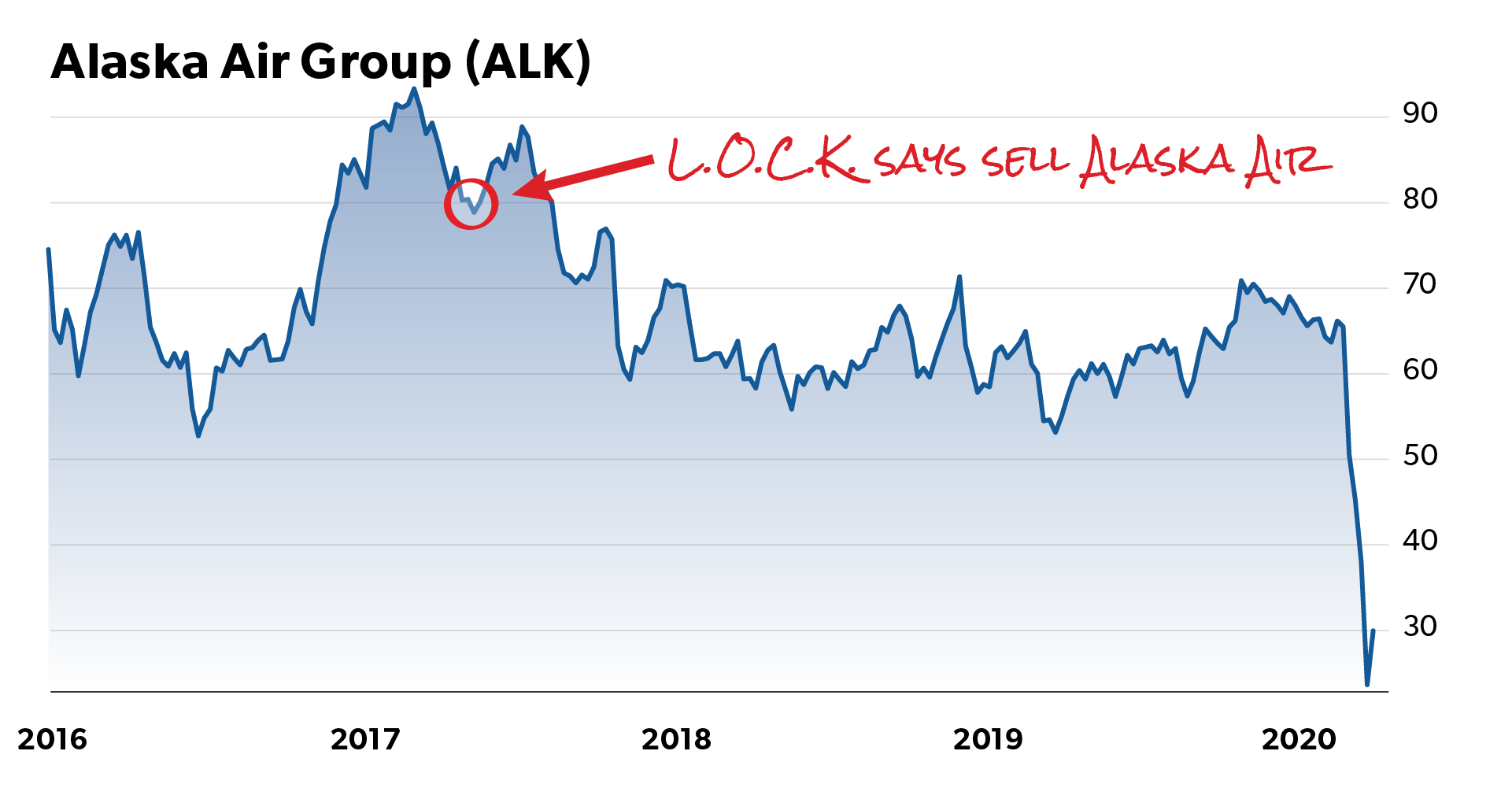 While most experts were screaming “Buy!” – I told my clients to sell this company and avoid the mess.
While most experts were screaming “Buy!” – I told my clients to sell this company and avoid the mess.
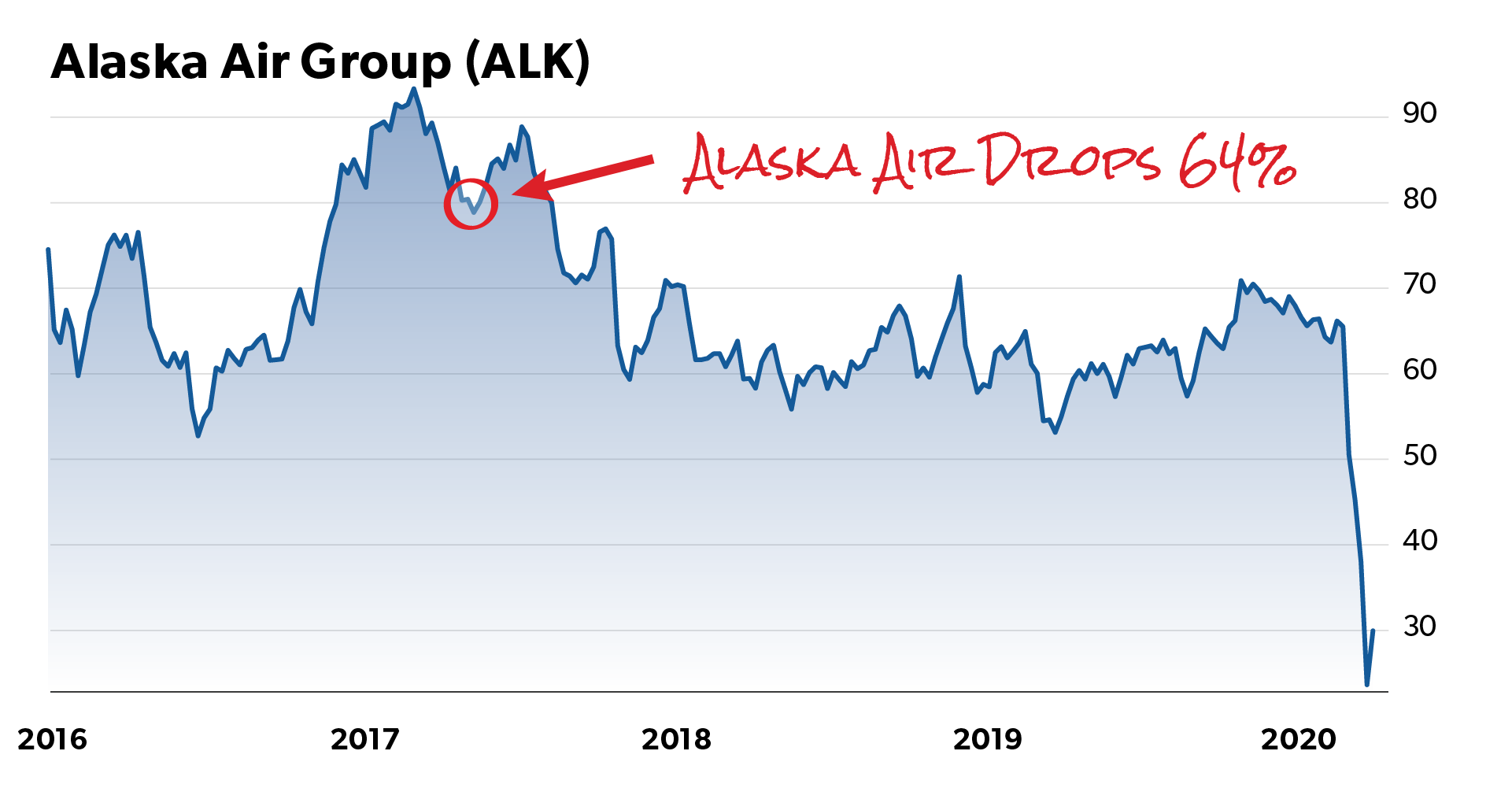 Over the next couple of years, Alaska Air’s share price tanked… down 66%.
Over the next couple of years, Alaska Air’s share price tanked… down 66%.
Back in 2012, L.O.C.K. spotted a similar situation to today.
Oil and natural resource prices were on the verge of a crash.
When I dug deeper into the business using L.O.C.K. – I was shocked.
Even a small drop in oil prices would destroy the revenues of the industry’s key players.
Yet no one was talking about it.
They didn’t look at the numbers the same way as L.O.C.K.

Over the next few years, I urged investors to sell or avoid a number of related stocks, like Continental Resources, Occidental Petroleum, and Schlumberger.
 Within months, those stocks had dropped 77%, 61%, and 52%, respectively.
Within months, those stocks had dropped 77%, 61%, and 52%, respectively.
Anyone who took my advice avoided catastrophic losses in the oil sector…
But look, I don’t just spot the “bad guys” in the market – the ones who are on the way down.
My L.O.C.K. system has picked winners over and over again, long before most investors heard of them.
Like the time you could have made 816% on Square.
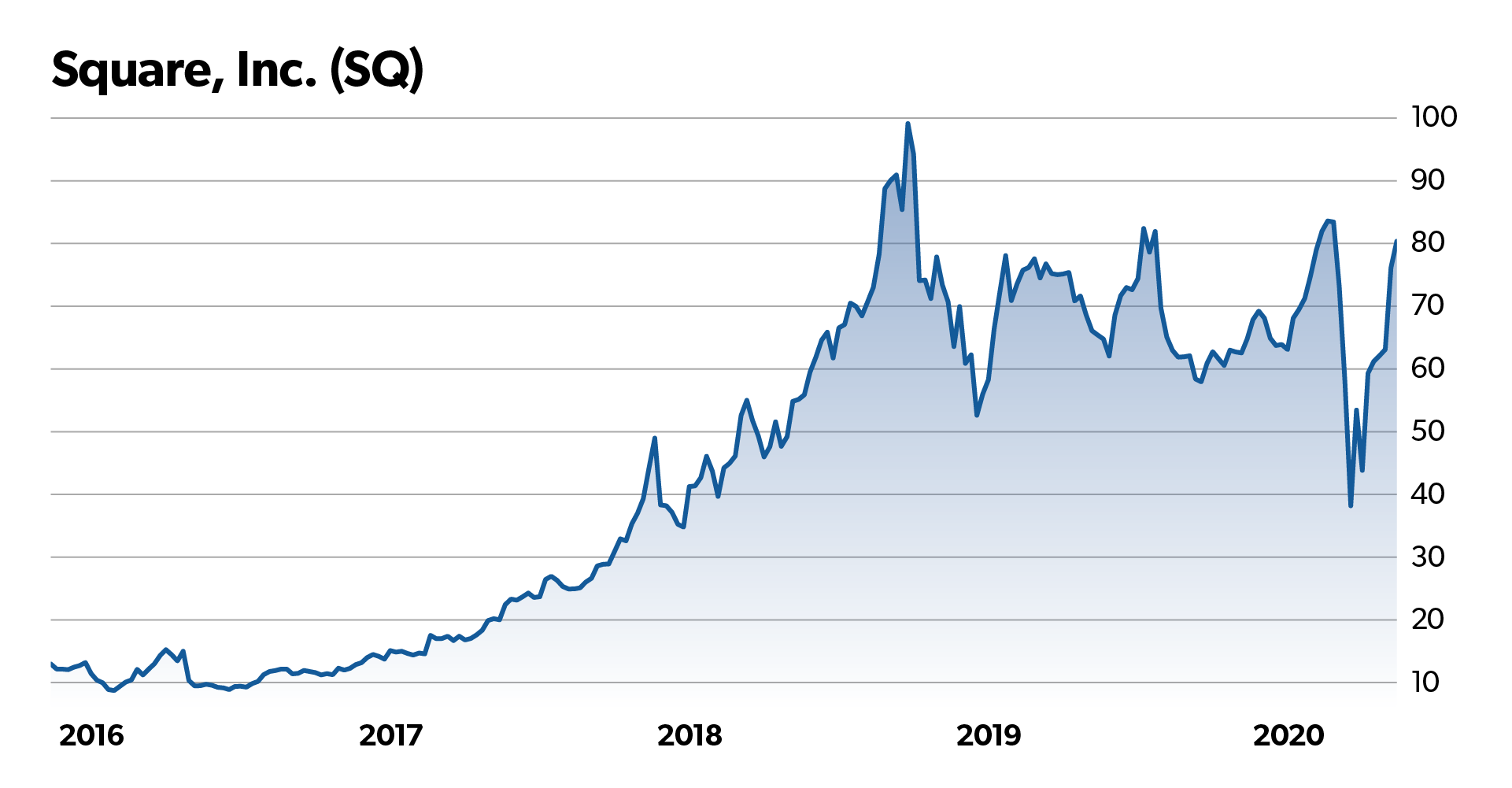
Analysts thought the new payment processing software company was an overhyped dud…
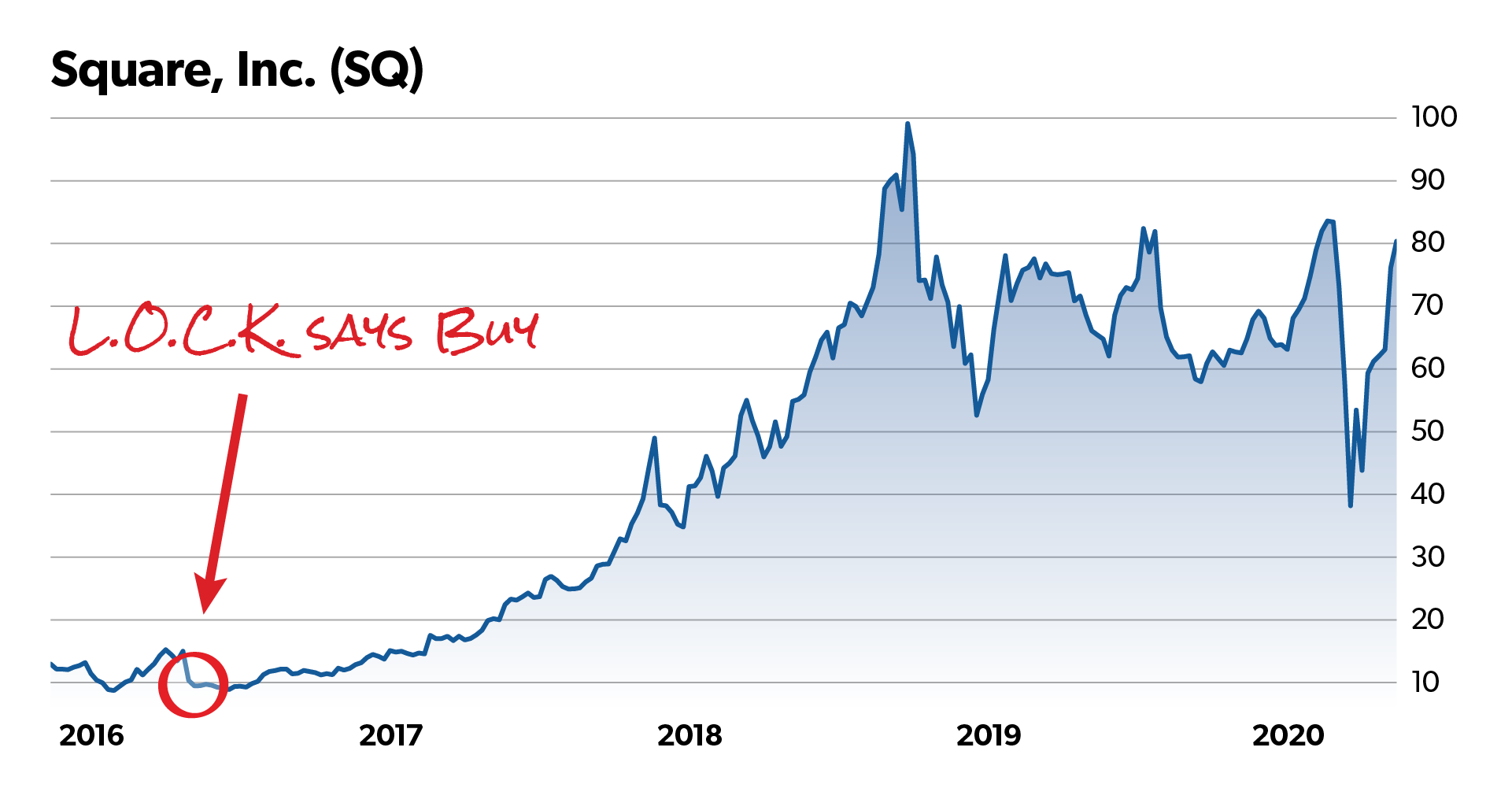 While I didn't recommend this stock, my L.O.C.K. system spotted something all of the other so-called experts missed.
While I didn't recommend this stock, my L.O.C.K. system spotted something all of the other so-called experts missed.
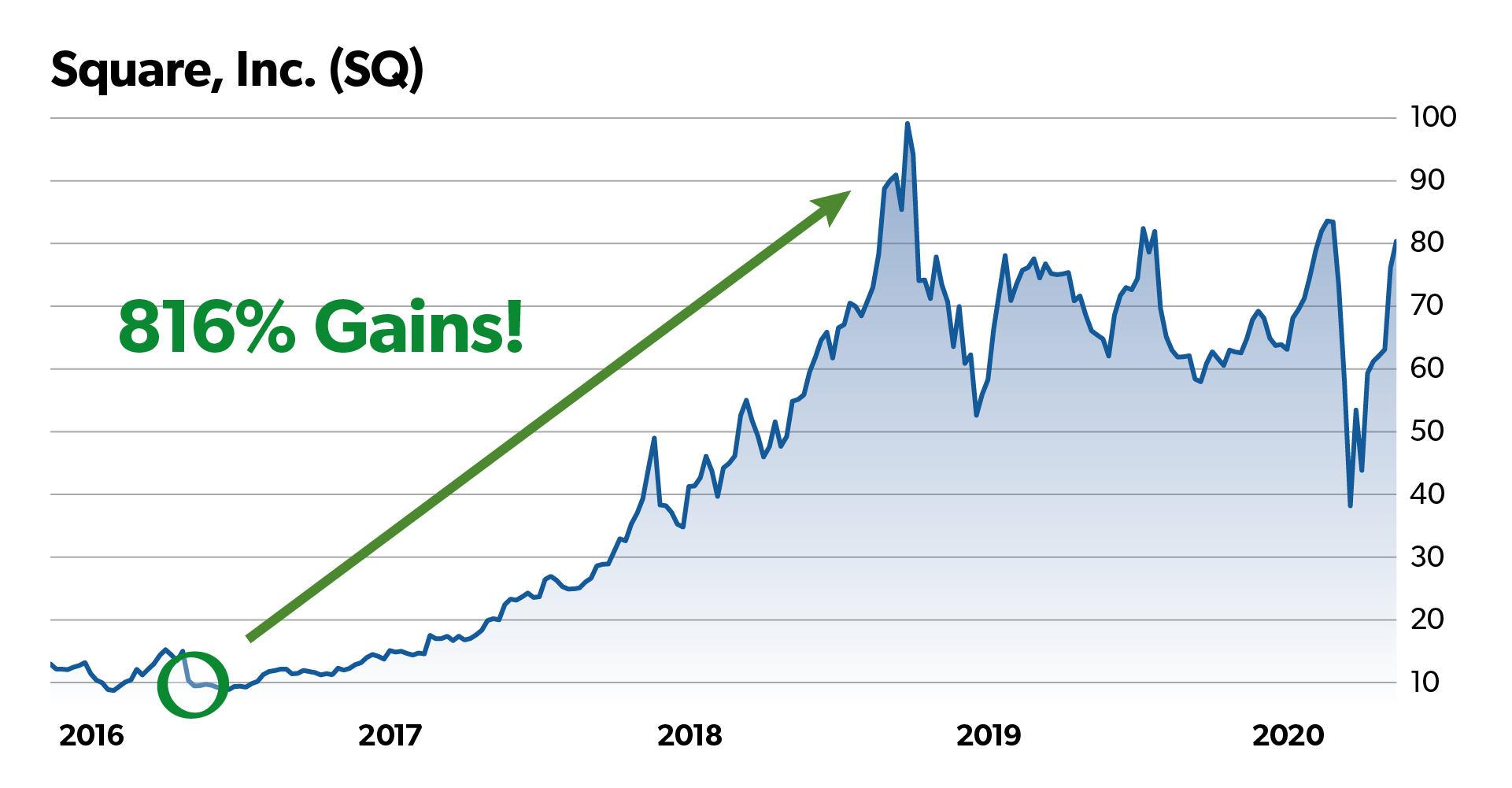 Within two years, anyone could have had the chance to make 8 times their money.
Within two years, anyone could have had the chance to make 8 times their money.
Or when RingCentral looked like they might be going out of business.
The experts piled on the negative news.
But I don’t care what the experts think… Only what the numbers say.
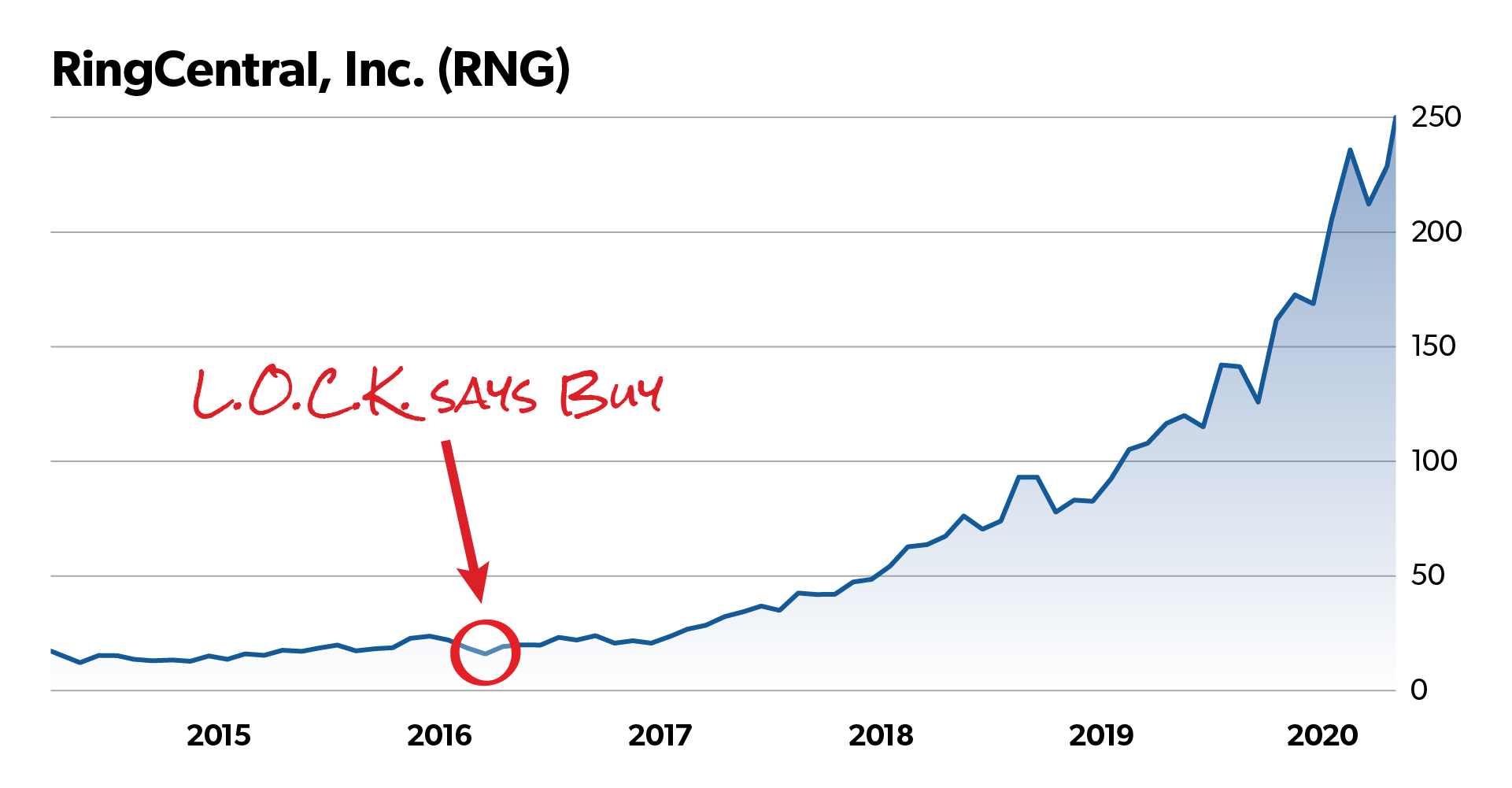 And the truth was, when viewed through the L.O.C.K. system’s unique set of numbers, RingCentral had all the markings of a big winner.
And the truth was, when viewed through the L.O.C.K. system’s unique set of numbers, RingCentral had all the markings of a big winner.
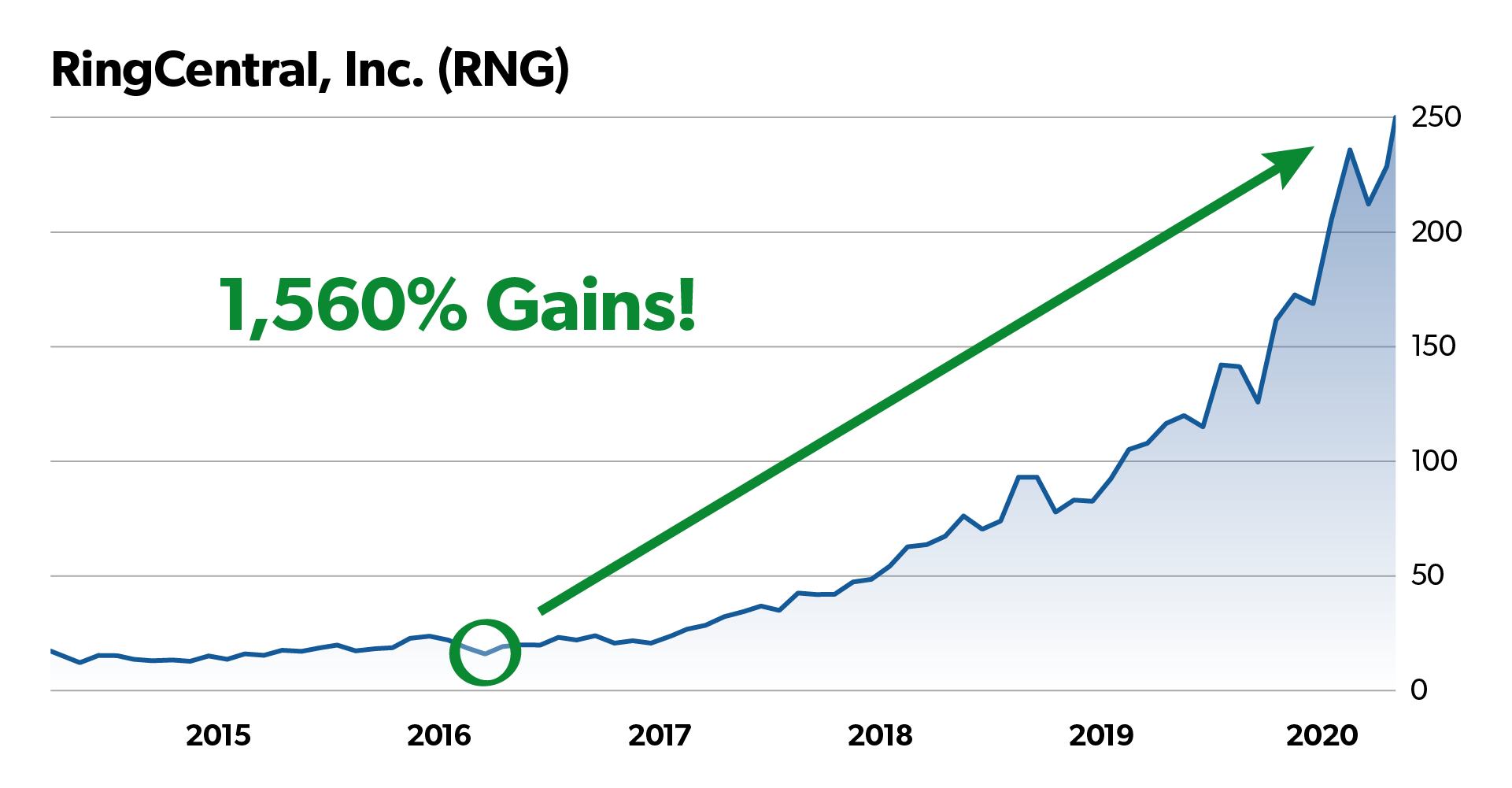 While I didn't recommend this stock, it has gone up 1,560%.
While I didn't recommend this stock, it has gone up 1,560%.
If you had known about this back in 2016, you could’ve invested $10,000 – and gotten back $156,000.
Maybe no call was bigger than Advanced Micro Devices.
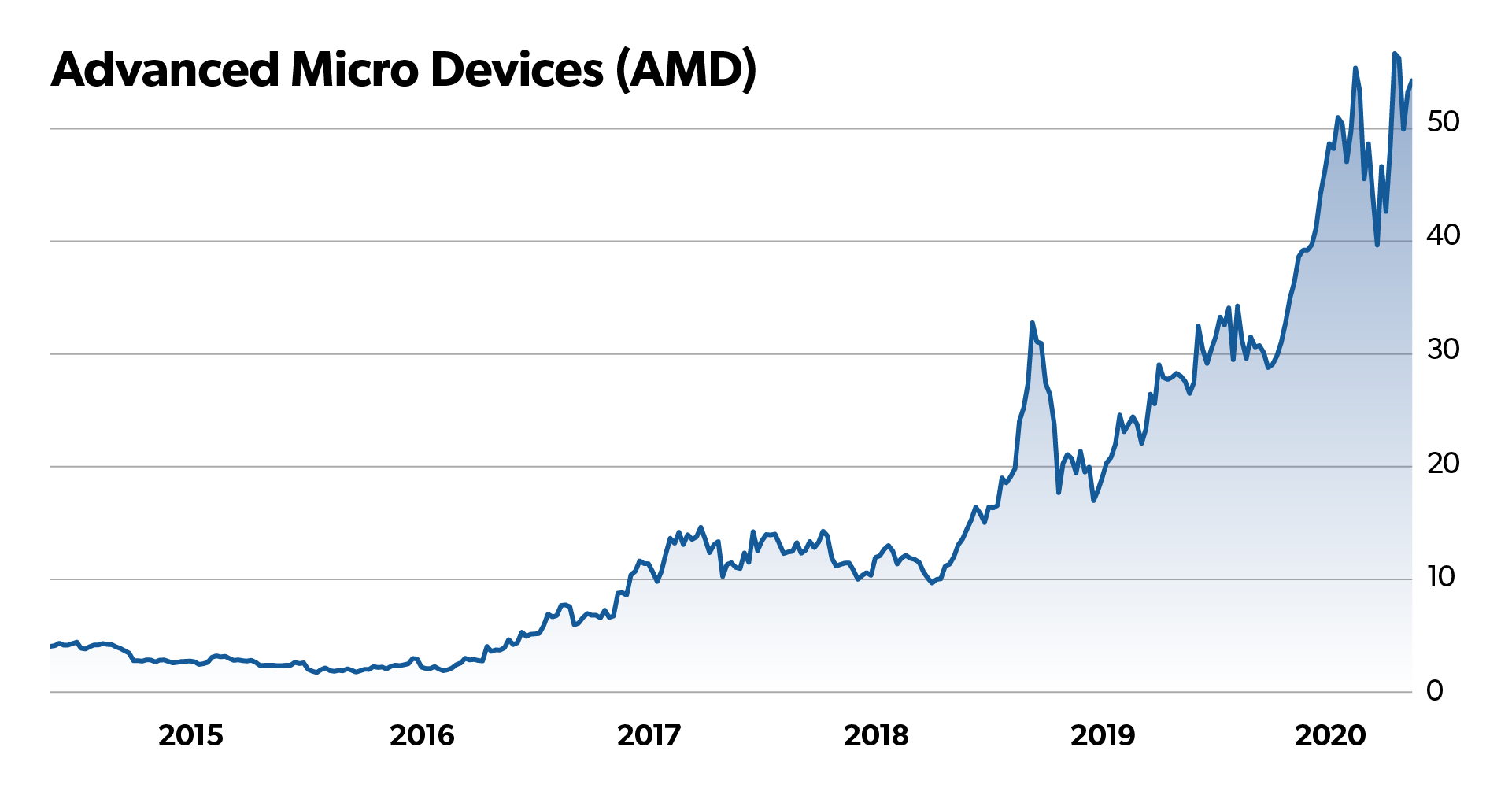 The stock was down a stunning 96% when I put it through the L.O.C.K. system.
The stock was down a stunning 96% when I put it through the L.O.C.K. system.
Most investors wouldn’t touch it with a 10-foot pole. The company seemed to be left for dead.
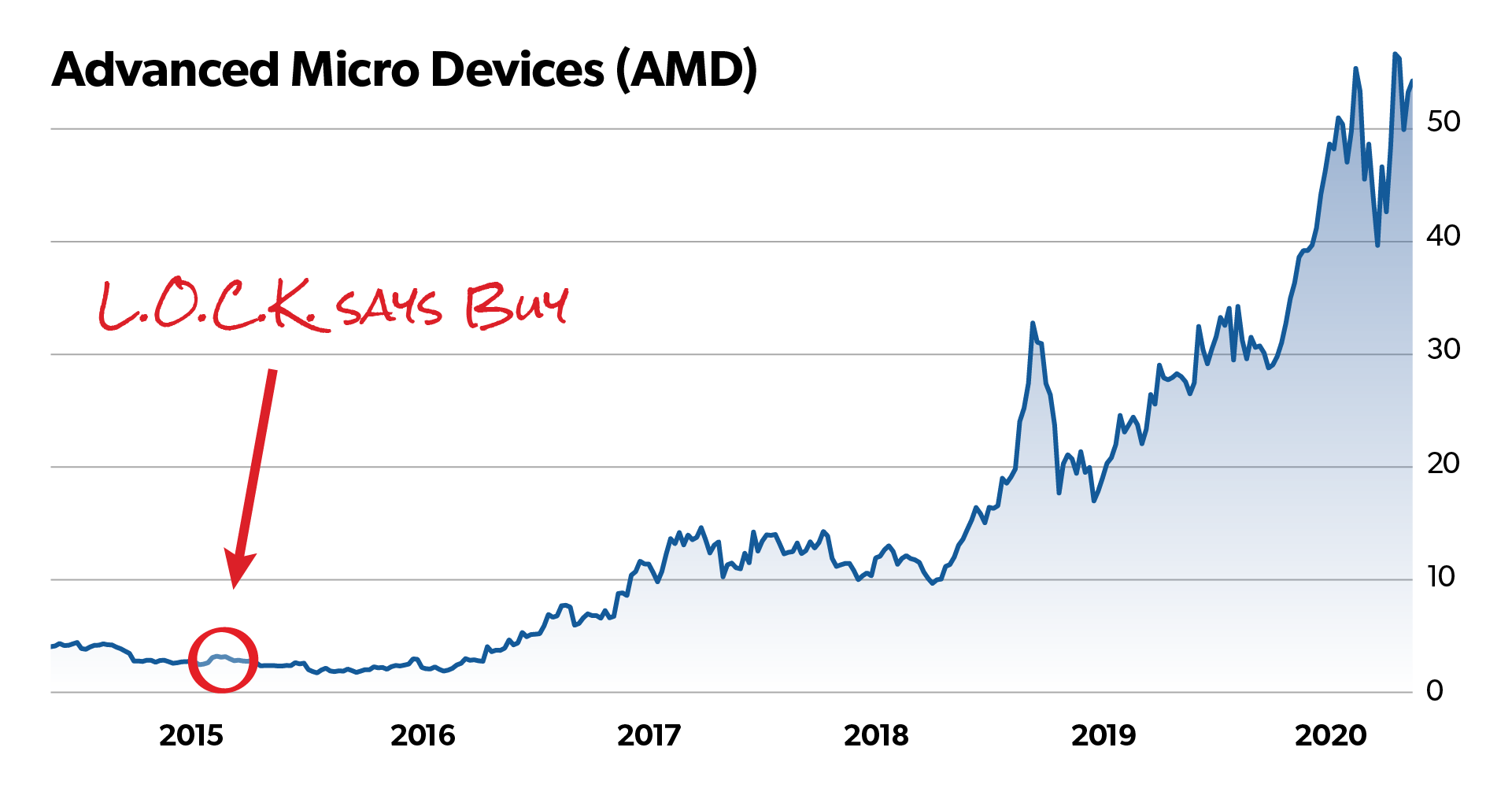 But L.O.C.K. did its job…
But L.O.C.K. did its job…
And found the truth about AMD.
On a day when most thought the company was on the verge of bankruptcy, I went in Barron’s and said it was a screaming buy.
(You should’ve seen the comments…)
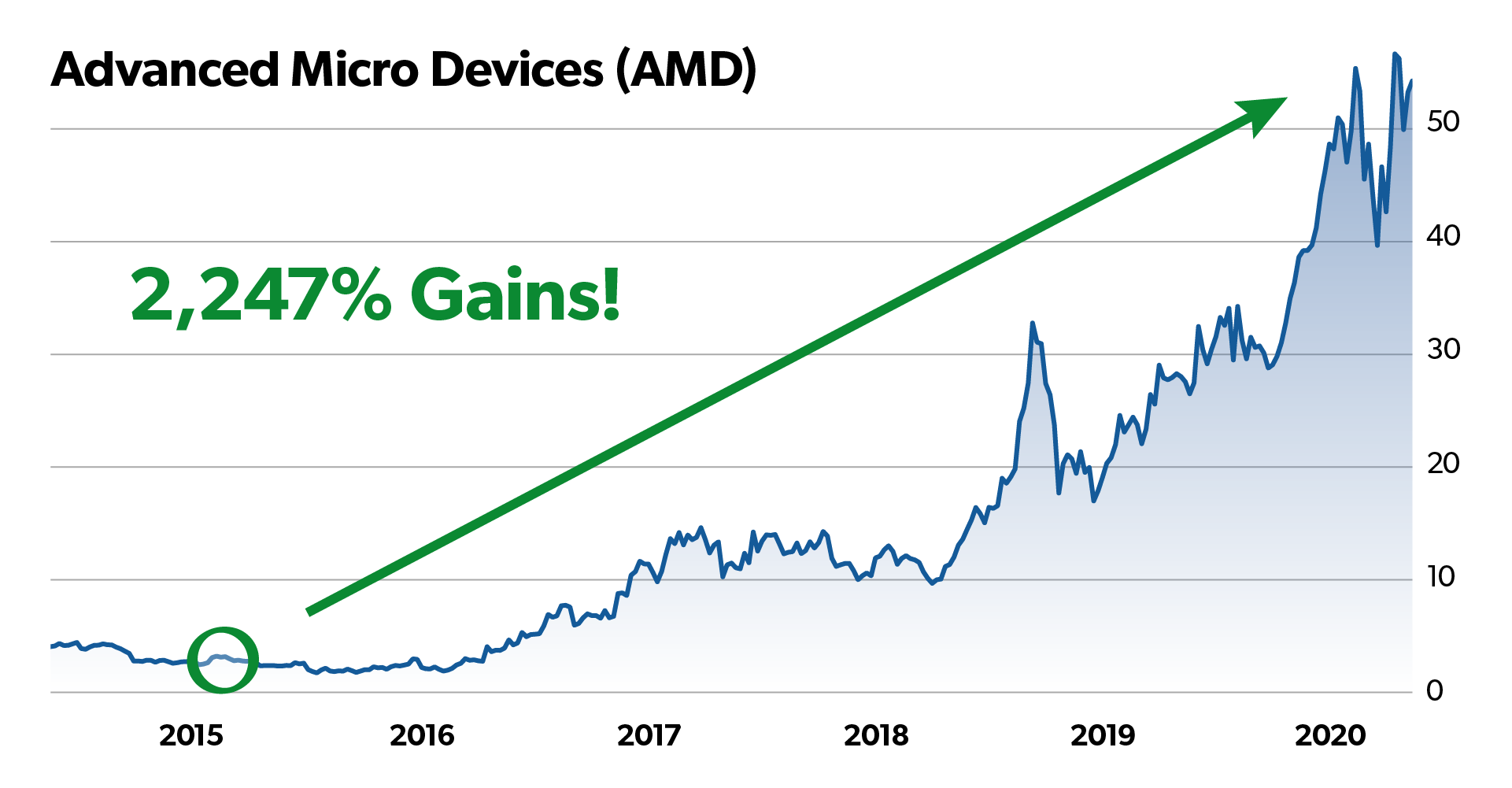 But I was right. And from that day forward, AMD soared as high as 2,247%!
But I was right. And from that day forward, AMD soared as high as 2,247%!
Over and over again, the L.O.C.K. system makes fools of the mainstream media… and turns the conventional wisdom on its head.
I’ll explain more about the nuts and bolts of L.O.C.K. in a moment.
But I have more urgent information to share first.
I put every stock in the market through L.O.C.K. once a week.
And last week, I found a few surprises.
Some of the most popular “stay-at-home” stocks are on the verge of ruin.
And quite a few under-the-radar companies are poised to become big winners in the post-Covid world.
It all centers around a vaccine. And the huge money shift that will take place as a result.
The sooner Covid-19 is snuffed out – the sooner these companies will crash.
And by that time, the new tech giants I’ll tell you about today – will likely be far more expensive.
This is the very same advice I’m giving to all the world’s top money managers.
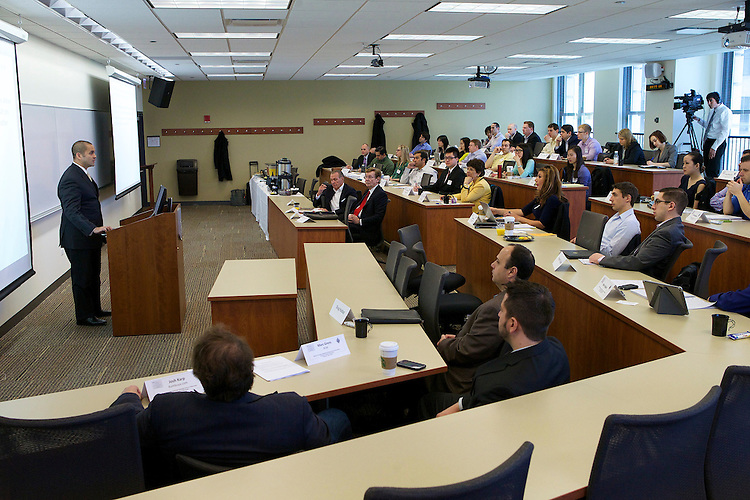 And you can be sure, if they move their money, the market will move with them.
And you can be sure, if they move their money, the market will move with them.
If you’re interested in making a fortune on the next wave of big tech stocks…
Not the same tired names…
Then stick around.
Because in a moment, I’ll show you which stay-at-home stocks to hold your nose and throw in the garbage.
But more importantly, I’ll share the details on FIVE under-the-radar tech companies poised to make a fortune on the new normal of the post-Covid world.
Each could give you a chance to double your money in the next year – even after the vaccine takes hold.
And over the next decade, as these stocks become household names… you could make a fortune. Just like my clients did on AMD.
This is how you build a retirement fortune.
By loading up on the right companies, just before they take off.
Thanks to the vaccine we can pinpoint how the market will look in a year…
Using L.O.C.K., I’ve looked ahead to identify the winners and losers of the post-vaccine world.
But it’s important to position yourself now.
As more people get the vaccine…
And the coronavirus case numbers start to decline…
The market will move quickly.
If you don’t want to get left behind, I urge you to watch the rest of my investigative report.
The 3 Pandemic Habits That Will Never Go Back to Normal
When I ran these stay-at-home companies through L.O.C.K., I found a common thread that separated the winners from the losers.
The key to understanding which companies will thrive in the post-vaccine world – and which won’t – is simple.
If the new habit was an improvement over the old, it will stay…
If it was just a temporary fix, it won’t.
For example, will we still settle for calling our family and friends on the Internet when we can actually go see them in person?
No.
Will looking at YouTube videos of Rome still be better than walking the streets of the ancient city yourself?
No, of course not.
But there are three habits that have proved overwhelmingly convenient during the pandemic.
These options are far superior to how we did it before Covid-19.
And there’s barely any extra cost to the consumer for the convenience.
All evidence suggests the genie can’t be put back in the bottle.
Over the next few moments, I’ll share all three habits with you.
And I’ll show you which stocks are poised to become the tech giants of the next decade.
When run through my L.O.C.K. system, these companies stand out as post-vaccine winners.
I’ll also warn you about a few “fad” companies – popular with the mainstream financial press – who are in grave danger.
L.O.C.K. says they will struggle after the vaccine is introduced.
Recently, I’ve started warning my big money clients about these same stocks.
So what’s the most obvious pandemic habit that will stay with us?
And how can you profit?
ENDURING HABIT #1: We Will Never Shop The Same Way Again
Whether it’s getting dinner, groceries, house supplies, or big-ticket purchases…
Americans are shopping online at an exponentially higher rate than before the pandemic.
In fact, 3 out of 4 people tried shopping online for the first time in 2020…
Half of all those people said they would continue to buy groceries online, even after the pandemic.
Normally consumer adoption like this takes a decade.
In reality, what we’ve actually done over the past year is skip ahead to 2030.
A trend that would’ve taken a decade to play out has happened in a matter of months.
Obviously, this will have a huge impact on you and your money.
The necessity of Covid-19 forced normally tech-phobic people to jump in with both feet.
Many of these new users were older Americans… typically the hardest audience to convert online.
Allan S. is a retired accountant from Missouri.
The 81-year-old told The Wall Street Journal he will shop online from now on.
“I will never go to a grocery store again in my life because it's just so convenient and easy.”
58-year-old Brooke M. of Colorado started using food and grocery delivery services during the pandemic.
She even bought a car online – a first for her.
“I’m not sure I'll ever go into a car dealership again,” Mallers said in an interview with the Wall Street Journal.
“It was fun to have an experience that's new and the Internet enables.”
The number of baby boomers who ordered groceries through a website or app increased by 193% after the onset of the pandemic.
As more consumers went online, companies spent more to bolster their online shopping systems.
Eventually, this network acceleration becomes a permanent change.
Walmart Chief Executive Doug McMillon says online shopping “will persist beyond the pandemic.”
The future is online says Stefan Larsson, president of Calvin Klein and Tommy Hilfiger.
“Consumers won't go back to shopping the way they did before the pandemic. They will go forward into the new normal.”
So which stocks will benefit?
I’ll share those details in a moment.
First, let me give you a quick warning.
There is one delivery company you absolutely do NOT want to own.
Door Dash. Or any food delivery company, for that matter.
That’s not where the profit is in this sector.
My L.O.C.K. system threw up an alarming number of red flags in my report on Door Dash.
When I dug deeper into its food delivery business I did not like what I found.
The company went public in a splashy IPO this year. And investors rushed in.
On its first trading day, the company was valued at around $71.8 billion.
That’s more than most of its restaurant clients are worth.
 In fact, this chart shows Door Dash was ridiculously valued at more than Chipotle, Domino’s, Dunkin’ Donuts, Applebee’s, Outback Steakhouse and Denny’s – combined.
In fact, this chart shows Door Dash was ridiculously valued at more than Chipotle, Domino’s, Dunkin’ Donuts, Applebee’s, Outback Steakhouse and Denny’s – combined.
How is that possible?
The quick answer is: It isn’t.
And when I held Door Dash up to the cold, hard light of the L.O.C.K. system, I discovered a major cash flow problem.
Even during the pandemic, Door Dash was hemorrhaging money.
And in the fine print of the IPO paperwork, the company admitted it expects to continue losing money in the coming years.
If Door Dash can’t make a profit during the pandemic – how will they profit after the vaccine?
Avoid this company. And this sector in general.
Almost every other popular delivery company is facing the same cash flow issues.
There are lots of other places with huge potential for gains due to the shift to online shopping.
But food delivery is not one of them.
In fact, there is very little profit margin in the delivery business overall.
The L.O.C.K. system frowns on the lack of cash flow. Something most analysts miss.
I recommend avoiding UPS and FedEx – as well as Domino’s Pizza.
There’s a better way to profit.
Rather than try to pick winners in a highly competitive business – why not invest in all of them at once?
And the way to do that is by investing in companies that power the infrastructure of the online shopping industry.
That’s what I did when I discovered AMD.
They make a key piece critical to the cloud computing systems of Google, Amazon, and Microsoft.
Those three companies’ cloud platforms generated nearly $28 billion in revenue in the first quarter of 2020 alone.
And it all hinged on the power of AMD’s component part.
No matter which company dominates the sector – they all need AMD.
 That’s why the stock went up as much as 2,247%.
That’s why the stock went up as much as 2,247%.
And it’s the same with the online shopping industry.
The L.O.C.K. system rates these “pick and shovel” companies highly.
Because their future revenue potential is massive.
The mainstream media only looks back… a quarter at a time.
And they miss out on the real story.
The same thing is happening right now.
While the mainstream is arguing over who’s going to win the food delivery wars…
They’re missing out on a company crucial to the infrastructure of online shopping and delivery.
Without them, the entire online shopping world would crumble…
I’m sure you’ve noticed; the pandemic has accelerated our move to a cashless society.
No one runs to their wallet to find $20 for the pizza guy anymore.
Nearly $1 million is spent online every minute.
It’s something most of us never stop to think about:
How does money get from one place to the other online?
The answer?
Extremely complicated remote payment programs.
And this company’s proprietary technology is at the heart of the remote payment business.
They’ve been around almost as long as the internet.
On average, their software handles 41.5 million transactions every single day.
That amounts to over $20 billion in remote payments every week.
8 in 10 online buyers use their technology – even if they don’t know it.
Right now, this payment processing giant is flying under the radar.
But the L.O.C.K. system says the company has the same potential for growth as Square.
You could have gotten in back in 2016 and watched as it went up as much as 816%.
Could this new recommendation go even higher?
I’ve put together a full report on this company called: The Giants of Online Shopping.
 It includes the name, ticker symbol, and recommended buy-up-to price – courtesy of L.O.C.K.
It includes the name, ticker symbol, and recommended buy-up-to price – courtesy of L.O.C.K.
To this point, I’ve only shared this top-level information with my high-priced corporate clients.
In most cases, the contents are classified.
But in a moment, I’ll give anyone watching this video a chance to claim a copy of The Giants of Online Shopping.
In this report, I’ll also include a second stock recommendation.
Right now, this second company is a one-stop-shop for cloud computing, AI, and data storage.
Making it massively important to the online shopping universe.
Apple pays them $30 million a month to run its massive cloud.
Netflix paid $19 million a month during the pandemic to keep its streaming service up and running.
Facebook forks over $11 million every month…
Over 100,000 companies as diverse as ESPN, Pfizer, Zillow and McDonald’s would shut down without the company’s cloud services.
And as technologies like the Internet of Things and machine learning continue to grow… this company is set to dominate the market for the next decade or more.
Yet the average investor has no idea how much room there is for growth.
I’ll include their name – along with the company critical to $2.5 billion worth of online payments every day– in The Giants of Online Shopping.
More on how to get a copy – and the names of these companies – in a moment.
But there’s obviously one key factor driving all of these new habits.
The widespread adoption of reliable, high-speed wireless internet.
And with the onset of 5G, we’re only scratching the surface of what we can do.
If the pandemic had happened 10 years ago, would you still have been able to order your groceries online, pay the driver with a click of a button on your smartphone and then track their route to your home?
The clear answer is no. The shift to online shopping and food delivery would not have happened at any other time in history – until now.
A confluence of advanced microchips, 5G speeds, and cloud computing make this online shift possible.
And there’s no turning back now.
That’s true of online shopping…
And it’s the same for our second permanent habit.
ENDURING HABIT #2: We Will Never Work the Same Way Again
The pandemic forced over 50 million Americans out of the office.
Four times more people worked from home in 2020 than the year before.
And it’s all thanks to technological advances the average American has made in the last 10 years.
If the pandemic happened in 2010, companies would’ve had to make different arrangements.
5G internet speeds were still a figment of our imagination…
Reliable video conferencing tools didn’t exist…
The average American has better hardware now too.
More smartphones have been sold in the last 5 years than in every year before that combined.
The pandemic has lasted so long, workers have adjusted to their situation. And they’ve invested in the proper equipment.
Laptop sales are up 27%, year over year… an unprecedented jump.
In early May, 7 in 10 employed Americans worked at home for at least part of the time.
And according to a number of studies, they were more productive.
That’s probably why multiple corporate surveys return the same opinion.
8 out of 10 CEOs said they would allow some level of work from home, even after the pandemic.
One consulting firm, Global Workplace Analytics, believes 6 times more Americans will work from home at the end of 2021 than before the pandemic.
So which companies benefit?
Just like with the first habit, you need to look past the fad stocks.
And look deeper at the companies critical to the entire infrastructure.
Without remote payment technology, online shopping wouldn’t exist.
And without reliable, cheap high-speed internet – working from home wouldn’t exist.
Our reliance on high-speed internet has increased exponentially.
As we enter the post-Vaccine world, the L.O.C.K. system favors companies crucial to the efficient operation of home internet.
Without these companies, we would not be able to work from home. It’s that simple.
And work from home will continue in some capacity years beyond the pandemic.
There’s a real shot at huge revenue growth in the next 2-5 years.
I’ve identified three companies I believe will rule high-speed internet in the 2020s.
And I’ve put together all the details on these companies in another urgent briefing: The 3 Pillars of the Internet.

Each of these companies could make you a fortune.
But all three of them together could make your portfolio bulletproof.
Just take a look at the highlights:
- A company that rakes in $38 billion a quarter from its multiple businesses. Its hands are in every aspect of the future of the internet, from cloud computing to the Internet of Things, online video streaming, and digital advertising.Most importantly, they offer businesses a full suite of services – think Microsoft, Zoom, and Slack all rolled into one.
- This cloud storage company proved so popular with at-home workers that 1 in 5 used this service – even when it was banned by most corporate IT departments. L.O.C.K. sees huge upside in the future hybrid work environment as workers use its products at home and in the office.
- The largest internet service provider in America with 26 million subscribers has huge room for growth throughout the country thanks to its proprietary high-speed internet technology.
I’ll outline exactly how high I think these companies could go in my investigative report, The 3 Pillars of the Internet.
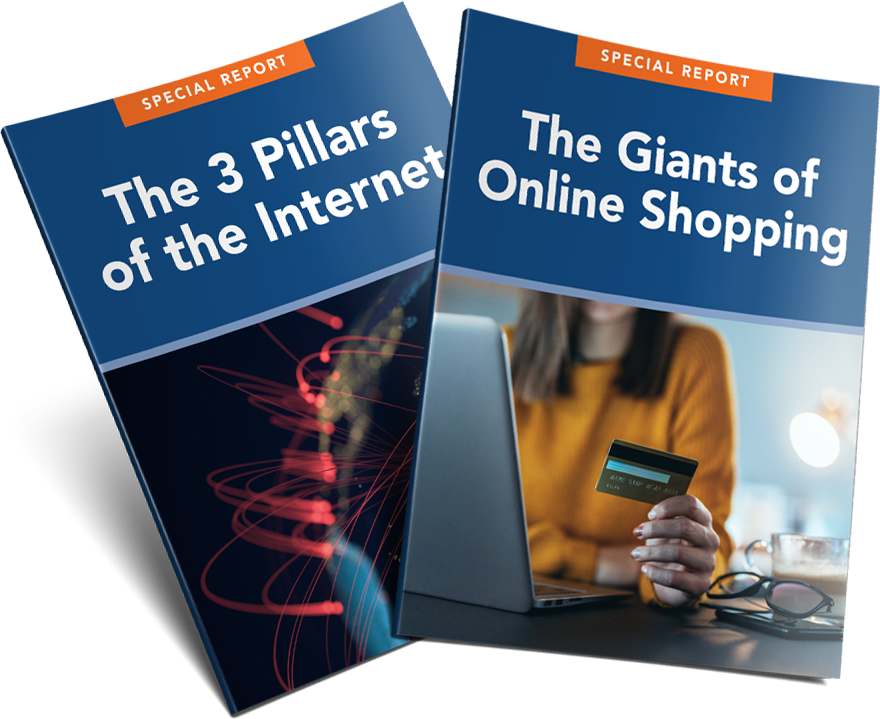 Watch until the end of this video to find out how to get a copy of this report and The Giants of Online Shopping.
Watch until the end of this video to find out how to get a copy of this report and The Giants of Online Shopping.
This is the same thorough, high-level information I share with 8 of the top 10 money managers in the world.
I’ve rarely shared this classified advice with anyone outside my corporate clients.
But, I’m doing it today because the situation is urgent.
So many Americans are overloaded in the wrong stocks…
And when the vaccine comes, our research shows these stocks will crash.
But unlike the coronavirus crash, we can see this one coming.
And you can prepare ahead of time.
The time to position yourself for the post-vaccine world is right now.
Before widespread vaccination begins.
You need to decide which companies are here to stay – and which to kick to the curb.
I discussed the three companies I believe will be the foundation of our internet in the 2020s.
But there’s one popular work-from-home stock I think everyone should avoid right now.
You’ve likely used it. And there’s a strong chance you own the stock.
I’m talking about Zoom Communications…
My research shows the market is currently pricing Zoom to double in size every year for the next five years…
And after the vaccine takes hold, we can expect video conferencing to decrease, taking market share away from everyone.
If you own it, sell Zoom now…
And take your winnings before the company sinks to the bottom when the pandemic is over.
When you claim a copy of The Giants of Online Shopping and The 3 Pillars of the Internet, I’ll also send you the full list of companies L.O.C.K. recommends avoiding right now.
In 14 Fad Stocks to Sell Before You Get the Vaccine, I’ll share the name and ticker symbol of the 14 most dangerous companies to own when the vaccine comes.
And I’ll explain why I think these popular companies are doomed.
Right down to revealing the specific numbers that are off.
I’ve already told you about Zoom, Door Dash, UPS, Fed Ex and Domino’s.
In my expose, I’ll share the names of nine other stocks that are popular with the mainstream financial press…
But whose future growth looks rotten at the core.
Consider these three reports your guide to navigating the post-Covid-19 stock market.
When the vaccine is introduced, it will separate the real players from the fly-by-night fads.
It’s simple.
If you want the chance to make money instead of lose money… you need to act on the information in these reports right away.
So how can you get a copy of all three reports…
- The Giants of Online Shopping
- The 3 Pillars of the Internet
- The 14 Fad Stocks to Sell Before You Get the Vaccine
Sent to your inbox immediately?
Well, I started a new project.
It’s something I’ve never done before.
And I’d like you to join me.
I’m sharing all of my deep stock analysis techniques with a few select people.
Folks like you…
You no longer have to be one of the top money managers in the world to get access to research from the L.O.C.K. system.
You can put the L.O.C.K. system to work for you.
You’ll be able to see through all the media’s garbage – and get a real, clear picture of every company in the market.
What is L.O.C.K. exactly? And how does it work?
You see, a lot of folks like to call me a stock “cop” because I investigate company operations like a crime scene.
I look for clues others miss.
I’m certainly no hero like the real police officers who protect our streets and keep us safe every day.
The technical term for my job is a bit more boring.
I’m what’s called a “forensic accountant.”
It sounds nerdy, but it was a forensic accountant who took down Al Capone.
Despite the more famous exploits of Elliott Ness and the Untouchables, Ness couldn’t build a strong enough case to put Capone away.
Instead, it was a forensic accountant for a Special Intelligence Unit of the United States Treasury named Frank Wilson.
He meticulously tracked down 2 million potential pieces of evidence looking for any link of a financial transaction tied to Capone – including cocktail napkins that served as informal receipts.
In the end, he was able to link Capone to federal tax evasion. And that’s what led to the mobster’s eventual arrest.
Wilson went on to become the head of the Secret Service. And his meticulous interrogations led one criminal to say:
“Wilson sweats ice water.”
Yes, I’m a Certified Public Accountant (CPA). But there’s much, much more to forensic accounting than what goes into getting a CPA.
You see, “forensic” means capable of holding up in court.
A forensic accountant can’t just accept numbers on their surface…
You have to prove discrepancies beyond a shadow of a doubt.
What does that have to do with the stock market?
Well, I’ve identified over 130 flaws and discrepancies in the general accounting standards used to keep the books of most American corporations.
These are the same numbers that are fed to the so-called experts.
But when you apply my specific accounting principles, correcting these 130 flaws…
The numbers – and the outlook for the stock – can change drastically.
That’s what the L stands for in my L.O.C.K. system.
Locate.
I run a screen on every stock in the market – after adjusting the numbers to my higher forensic standards.
I do this by correcting each company’s financial reports for all 130 general accounting flaws.
Then I take another look…
And locate the stocks that are highly undervalued – or overvalued – by the market because of these accounting flaws.
My numbers reveal the true picture. And that’s how you find hidden gems in the market…
And avoid ticking time bombs in your portfolio.
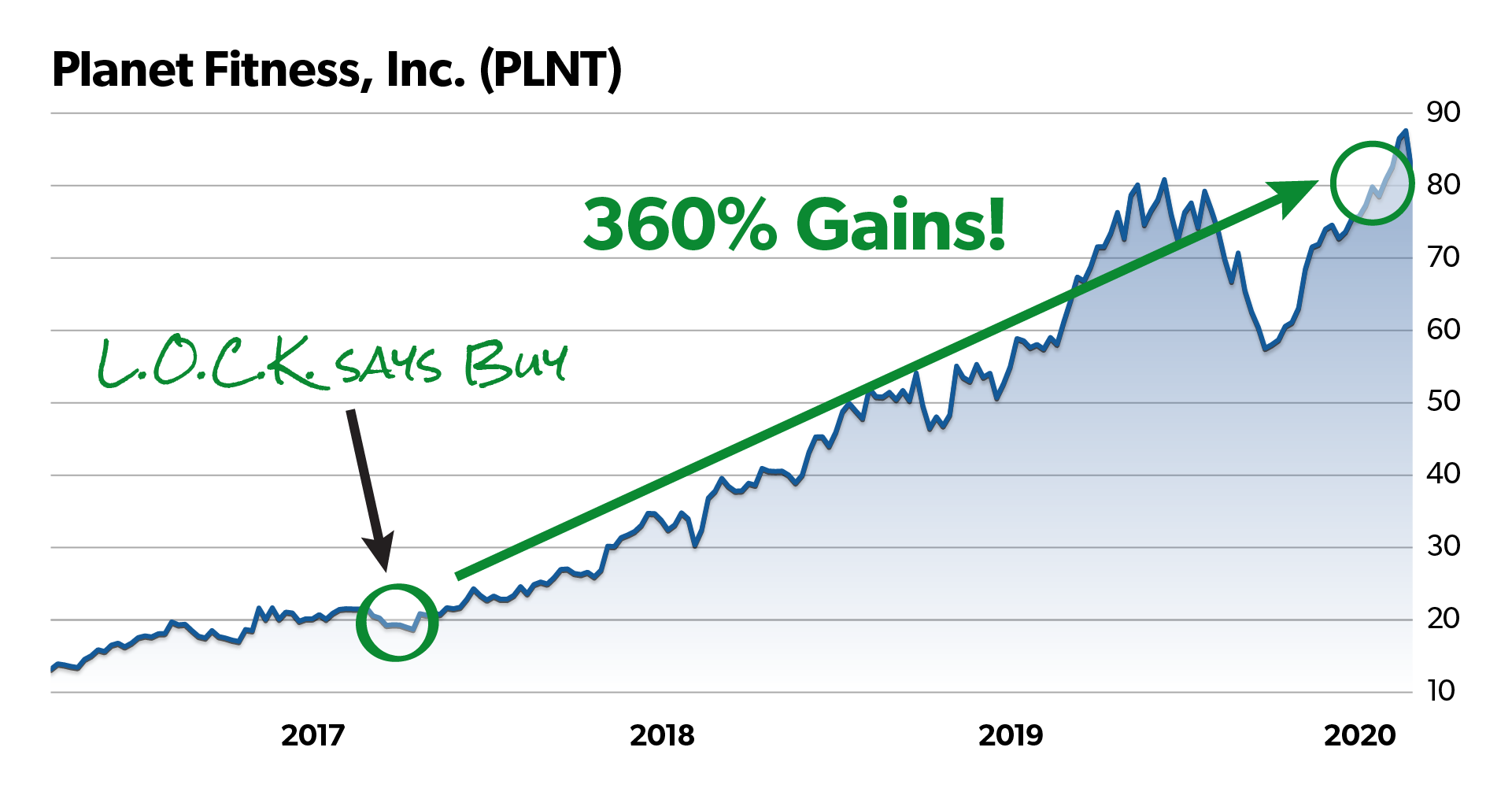 Like when we recommended Planet Fitness right before it went up 360
Like when we recommended Planet Fitness right before it went up 360
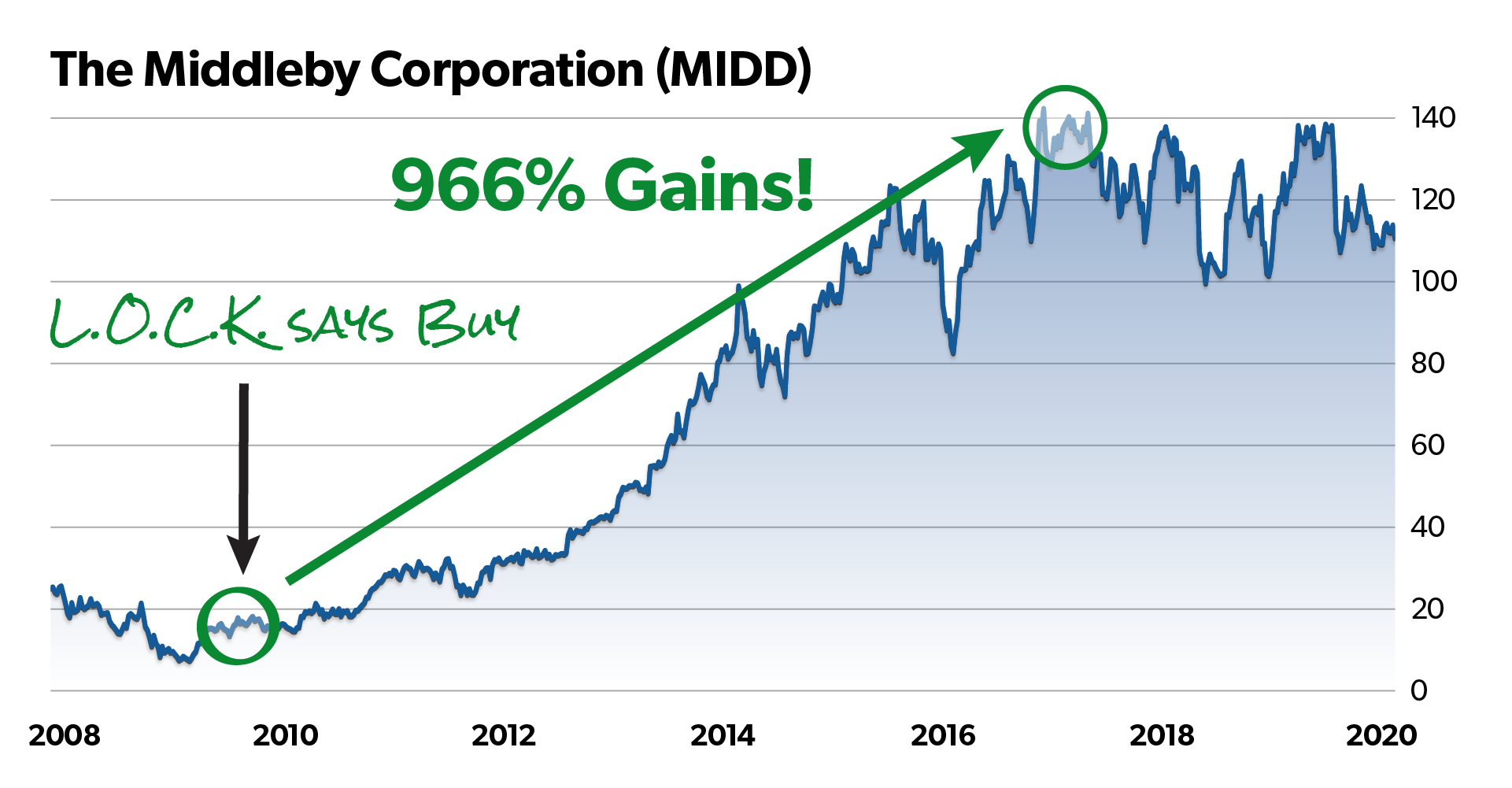 Or when L.O.C.K. spotted a 966% gain on The Middleby Corporation…
Or when L.O.C.K. spotted a 966% gain on The Middleby Corporation…
 Or 308% on smokeless tobacco start-up Turning Point Brands.
Or 308% on smokeless tobacco start-up Turning Point Brands.
Once I’ve narrowed the list down to anywhere from 30 to 200 outlier stocks, I take a deeper look at company operations.
That’s the O in L.O.C.K.
Who are the people running the company?
What is their long-term strategy?
What industries are critical to their growth?
Of course, I don’t do all of this myself.
I actually have a team of 100+ accountants and analysts working behind the scenes.
After we dig deeper into operations, we narrow down our list of target companies.
And that’s where the real magic happens.
The C in L.O.C.K. stands for Calls.
I use what’s called an electro-audiogram (EAG) to analyze quarterly earnings calls for changes in the CEO’s pitch and voice patterns.
It’s like putting every CEO up to a sophisticated lie detector test.
My system has nine different speech markers it uses to gauge whether the speaker believes what they’re saying.
Stuff like the speed of their speech, the volume of their statements, whether the speaker sounds stressed or hesitant.
If the speaker is hiding something, our system will catch it.
You can train a CEO to say they are excited about a new product launch or they can speak in a monotone and control hand gestures, but it’s impossible to prevent them from getting butterflies in their stomach. It’s why the police still use lie detectors today.
And even better… my system can pick up on hidden excitement too.
You see, some of my biggest winners – like AMD – came from using this technology to detect a CEO practically jumping out of his seat.
When that happens after the stock has passed all of my other tests… it’s a screaming buy.
So by the time you get one of my recommendations…
I’ve already run them through a unique forensic accounting screen, to Locate who is flying under the radar.
Then I use my army of 100 analysts to drill down to the future potential of these companies by examining the O>perations.
After that, I put the CEO’s conference C>alls through our custom EAG to see who is confident in their company’s future – and who isn’t.
The final decision is the K in L.O.C.K.
Kick it or Keep it.
After that, I issue a buy or sell recommendation.
This is what I do for 8 out of the top 10 money managers in the world.
And I’d like to do the same for you.
Every month, I’ll alert you to hidden gems in the market…
And I’ll warn you about ticking time bombs that could be lurking in your portfolio.
I call this project Hidden Alpha because when you apply my L.O.C.K. system to the market, you uncover high-flying stocks on the verge of beating the market.
And when you join Hidden Alpha today, I’ll send you all three special reports, my compliments:
- The Giants of Online Shopping
- The 3 Pillars of the Internet
- The 14 Fad Stocks to Sell Before You Get the Vaccine
I’ll even send you an instruction guide to understanding my L.O.C.K. system of stock analysis – and exactly how forensic accounting can help you spot winners before everyone else.
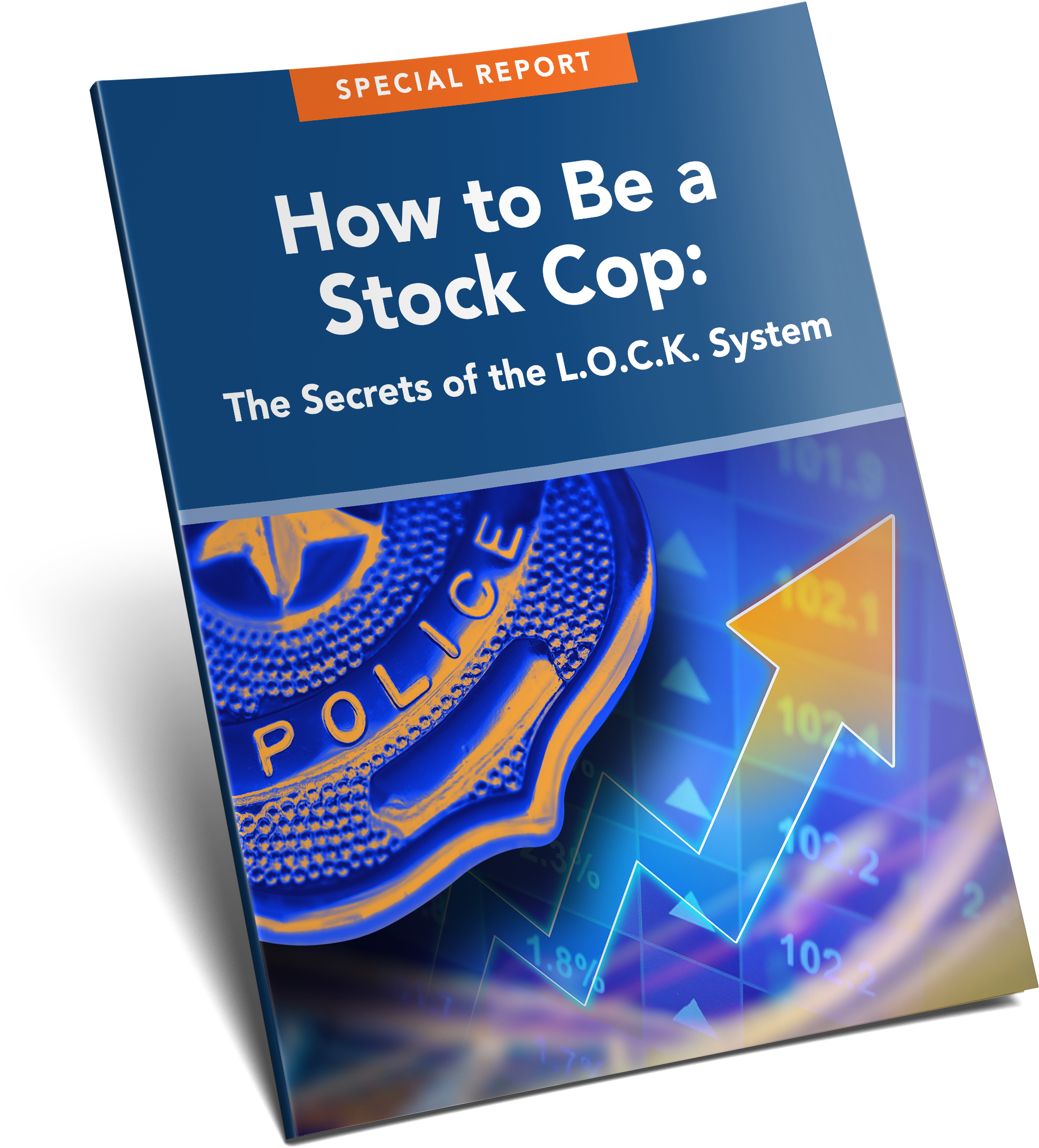 It’s called: How to Be a Stock Cop: The Secrets of the L.O.C.K. System.
It’s called: How to Be a Stock Cop: The Secrets of the L.O.C.K. System.
Inside, I’ll go into more depth on these accounting flaws – and how they apply to stock market analysis.
I’ll peel back the onion on the inner workings of my business…
And show you exactly why some clients pay over $100,000 a month for my analysis.
We live in strange times right now…
I’m concerned about individual investors who may not be prepared for what lies ahead.
Unfortunately, the one drawback of a vaccine is that it will massively alter the stock market – for the second time in two years.
If you are not nimble and prepared, you could end up in deep trouble.
Not only could you see large chunks of your portfolio wiped out.
But you could also miss out on big opportunities to buy winning stocks before they go up.
That’s why I’m making my typically high-priced research available to you in my monthly stock newsletter, Hidden Alpha.
And I’m going to charge you a fraction of what I charge my private clients.
In fact, I’m only charging enough to cover the production and distribution costs.
I’m actually going to lose money on this project.
But I don’t mind…
I want to make this information affordable and available for regular folks as well.
So many people took control of their own retirement during the pandemic.
And individual online investment accounts have sprung up everywhere.
.jpg) Popular website Robinhood has 13 million users as of 2020.
Popular website Robinhood has 13 million users as of 2020.
You deserve to know the truth about these companies’ revenue and potential – not just the lazy analysis the mainstream media feeds you.
When you join me at Hidden Alpha today, you’ll get 12 issues – one a month – with the latest from my L.O.C.K. system.
I’ll send you a new recommendation every month – the top under-the-radar stock in the market.
And I’ll keep you updated on any urgent news with my weekly updates.
You’ll also get all four of my investigative reports, FREE with your subscription price.
It’s my thanks for taking a chance on Hidden Alpha.
That includes:
- The Giants of Online Shopping
- The 3 Pillars of the Internet
- The 14 Fad Stocks to Sell Before You Get the Vaccine
Plus, my instruction guide, How to Be a Stock Cop: The Secrets of the L.O.C.K. System.
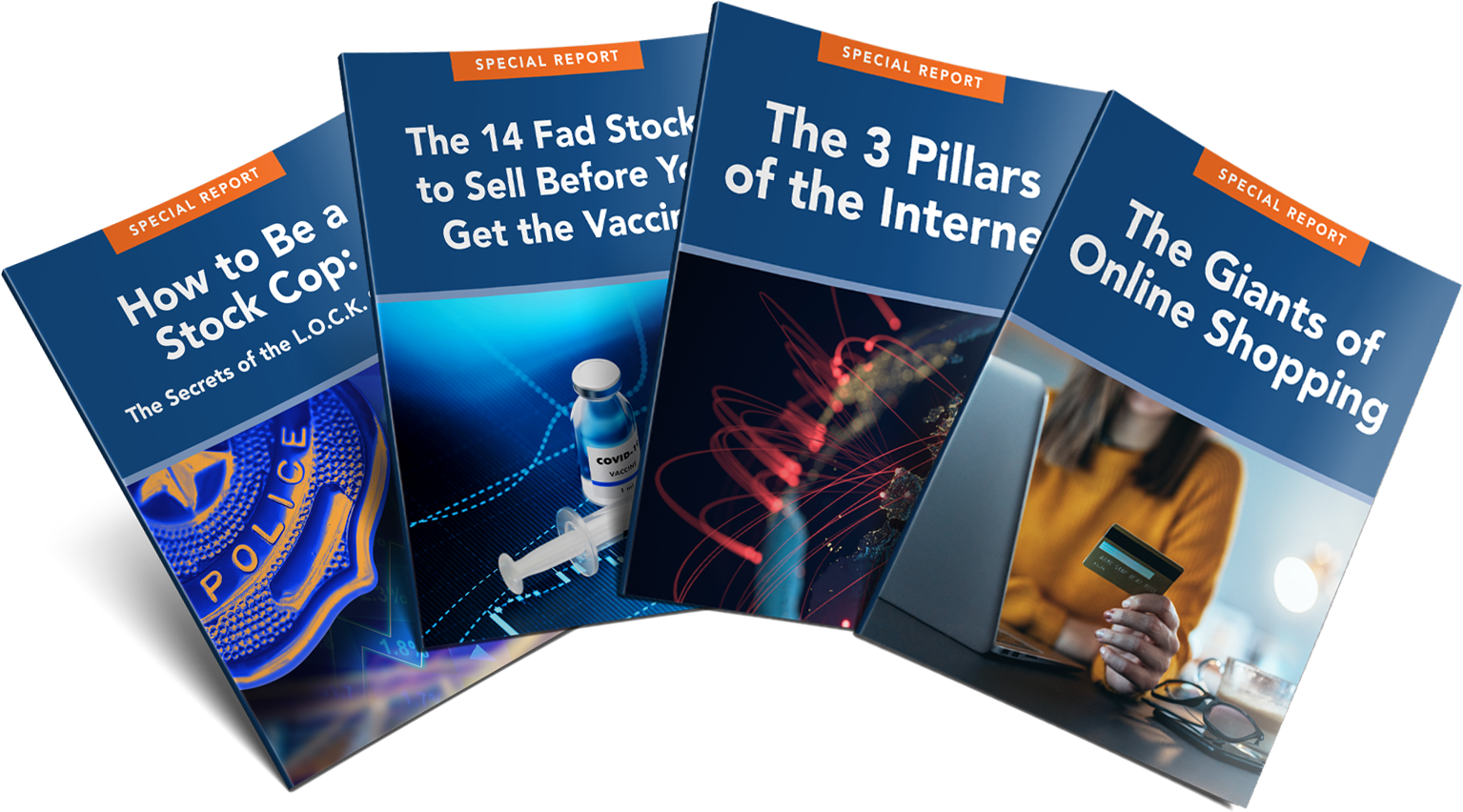 That’s not all of the benefits either.
That’s not all of the benefits either.
I’ll also give you 60 days to try out Hidden Alpha at no risk.
If you find that Hidden Alpha doesn’t deliver on its promises or isn’t right for you for whatever reason…
Simply call or email us to cancel and we’ll give you a full refund.
I’ll show you how to sign up in a moment.
But remember, I said there were three pandemic habits that would never go back to normal.
The third one has to do with how we entertain ourselves.
This shift affects a $42 billion industry…
That analysts project could be nearly 300% bigger in just five years.
Do you remember the 70s and 80s, when video games first came onto the scene?
For the most part, you had to go to an arcade to play those games…
It was way too expensive to buy a machine for yourself.
And the home systems were clunky – often the games were boring and basic compared to the arcade.
But as time went on, home video game consoles got both cheaper and more advanced.
Soon, playing games at home became far more popular than saving up a bunch of quarters and driving to the local arcade.
Most people haven’t been to an arcade in decades.
Very few exist anymore.
Now, the same thing is happening with movies…
ENDURING HABIT #3: We Will Not Watch Movies the Same Way Again
The shopping mall, as we know it, is dead.
Over 11,000 retail stores closed in 2020.
The pandemic-related shutdown of movie theaters – the anchor of so many malls – may have been the final nail in the coffin.
2020 saw a 78% plunge in movie ticket sales.
The biggest movie theater chain in the world, AMC Entertainment, is in a desperate race to avoid bankruptcy.
The number two – Regal Cinemas – just took on emergency debt to avoid insolvency.
Half of the nation’s theaters remain closed….
Blockbuster movie releases scheduled for summer have been delayed – or worse, released on streaming services instead.
You see, Americans haven’t stopped consuming entertainment like movies and shows – in fact, they’ve exponentially increased their consumption.
But instead of movie theaters – Americans are watching these movies in the comfort of their own homes.
Yes, once there’s a vaccine, movie theater attendance will increase…
But that’s only if they can stay in business long enough.
What’s more likely is that movie theaters go the way of arcades.
Only 33% of 2019’s movie-going public was under the age of 24.
Young people have grown up with dozens of video streaming choices.
High-speed internet is cheap and widely available.
TV technology has advanced rapidly. And they’re much cheaper than they used to be.
The high quality of laptops and even smartphones make them far more convenient than driving to the theater – even without the pandemic.
Besides, it costs $8.99 a month for a Netflix subscription and all the movies in their library.
The average cost to see just one movie at the theater is over $9. And that’s not counting the popcorn.
Movies have reached a tipping point… just like video games did.
This is perhaps the biggest habit shift of all.
And it affects a nearly $42 billion industry.
L.O.C.K. has found three ways you could make a fortune.
Movie Stock #1: With all of the streaming services out there, this one stands out to L.O.C.K.’s unique set of numbers.
Revenue is $1.6 billion monthly…
They have one of the largest libraries of movies. And new, original content coming every month.
This up-and-comer has the highest rate of subscriber growth too… 22% year over year.
L.O.C.K. suggests they will dominate video streaming for the next decade and beyond.
This is perhaps the #1 tech stock in the market.
Movie Stock #2: This company is a play on both the home theater and public movie theaters.
You see, they’re a key player in how your movies sound.
On top of that, they own over 8,100 patents related to all types of advanced theater systems.
Even if you don’t buy their brand, you’re likely still paying them for their technology.
Revenues have cleared $1 billion in each of the last two years. And as long as people watch movies, this company will get paid.
Bonus Stock #3: I mentioned video games earlier… Participation has exploded during the pandemic and it's unlikely it will slow even after a vaccine.
244 million Americans play video games…
The Wall Street Journal said: “Video games were already a multi-billion-dollar industry. The pandemic is sending them to another level.”
L.O.C.K. has unearthed one gaming company with room for massive growth going forward.
They’re a key player in the $175 billion a year gaming software industry.
I’ll give you all three names of these L.O.C.K. stocks in the final part of my Guide to the Post-Vaccine stock market.
 It’s called 3 High-Flying Home Entertainment Stocks to Buy Now.
It’s called 3 High-Flying Home Entertainment Stocks to Buy Now.
This report is yours free, immediately, when you subscribe to Hidden Alpha.
You’ll also get a free copy of four other valuable stock market briefings…
- The Giants of Online Shopping
- The 3 Pillars of the Internet
- The 14 Fad Stocks to Sell Before You Get the Vaccine
- How to Be a Stock Cop: The Secrets of the L.O.C.K. System
 Some folks pay as much as $100,000 a month for access to my research…
Some folks pay as much as $100,000 a month for access to my research…
But I’m going to charge you a fraction of that.
Hidden Alpha costs just $199 for a full year…
And I think that’s a fair price for all of this high-level research.
But, right now, because of the pandemic – I’m cutting the price 75%.
I’ll give you one year of Hidden Alpha – and all of your special reports – for just $49.
In doing this, I’ll be losing money. It’s just enough to cover production and distribution – not my marketing costs.
But that’s okay with me….
We are at an urgent crossroads in the market.
And I don’t want you to hesitate to take advantage of my expertise to protect yourself and potentially profit in the post-vaccine world.
Once a new vaccine takes hold, large chunks of the market will crumble.
And a number of under-the-radar stocks will rise.
I’ve shared a few of these future tech giants with you today.
And I’ll share quite a few more in the coming 12 months.
Of course, all investments carry risk… And past performance is no guarantee of future success.
But it is an exciting time to be an investor – if your money is in the right place.
Join me at Hidden Alpha– and put my L.O.C.K. system to work for you, right away.
Sincerely,
Joel Litman

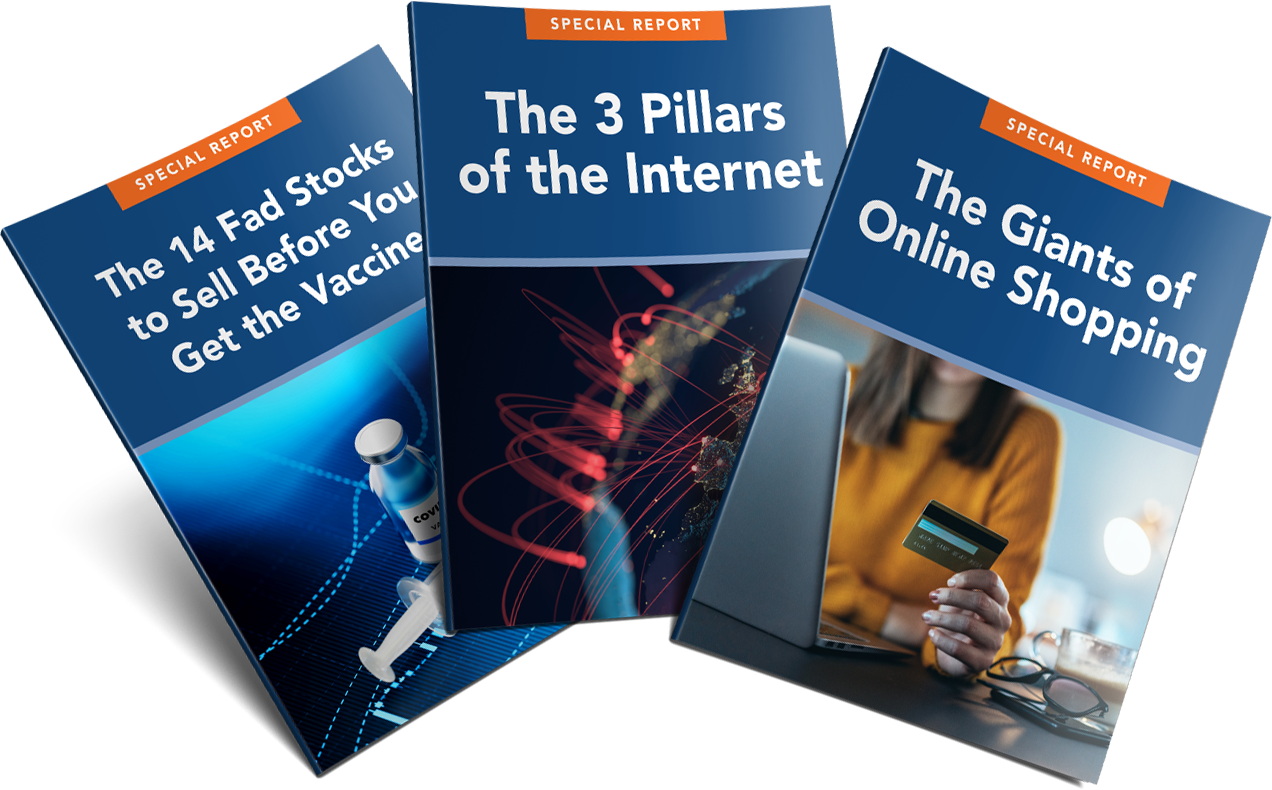
.png)
